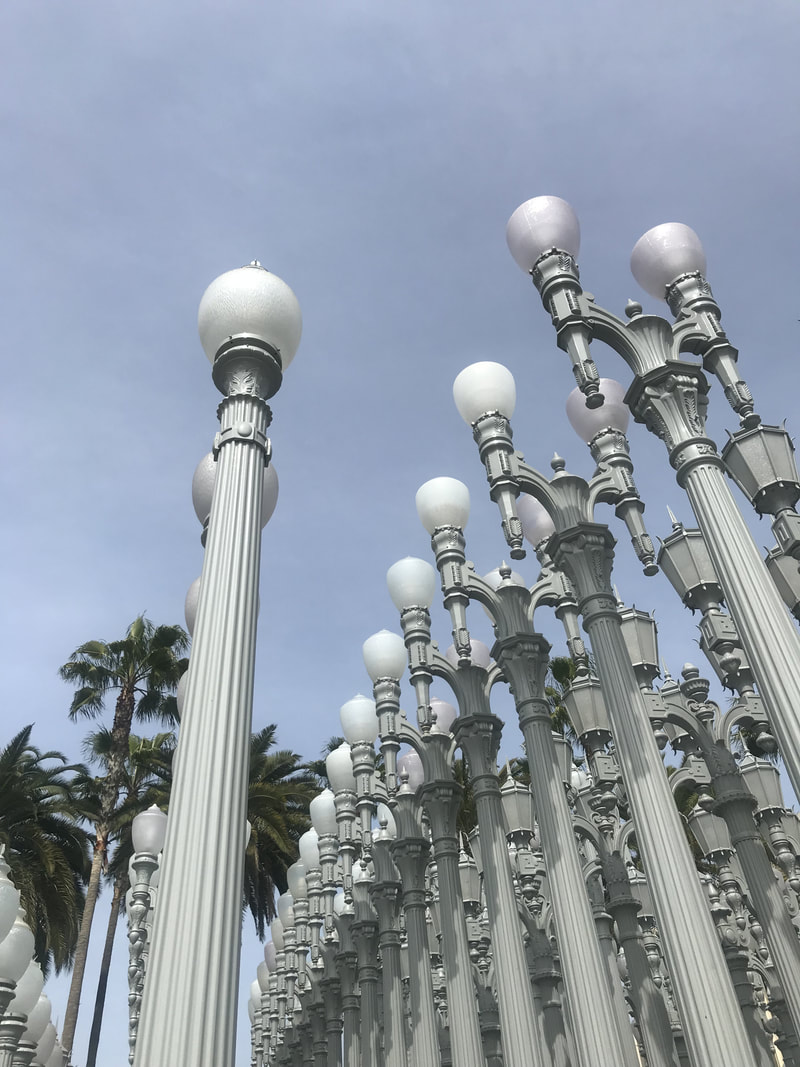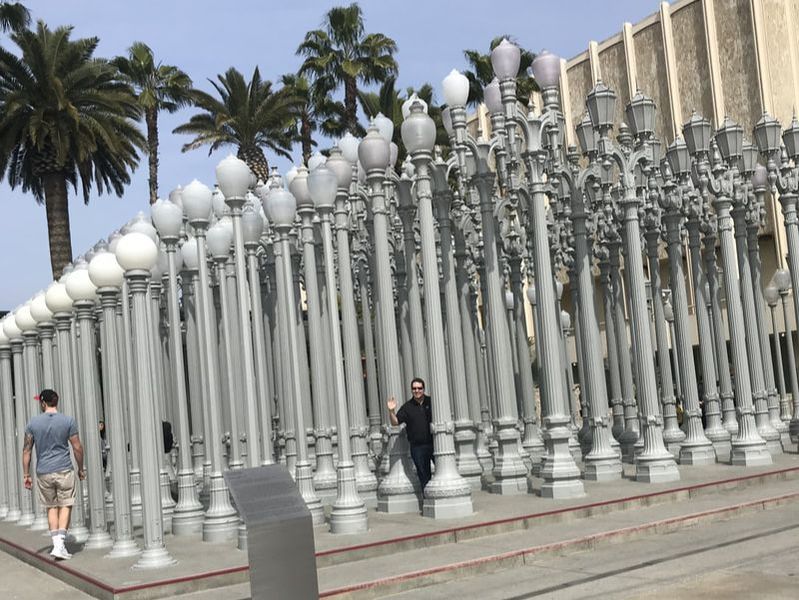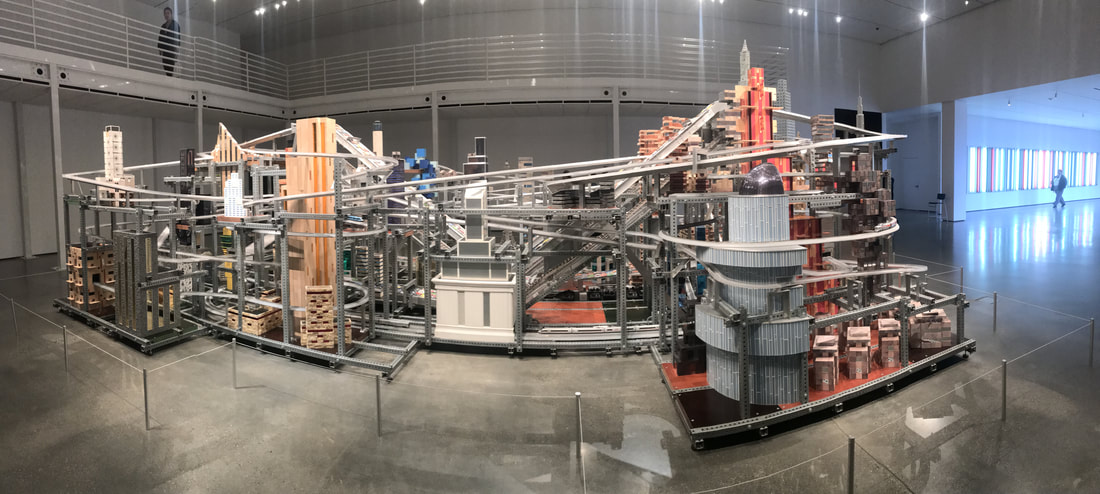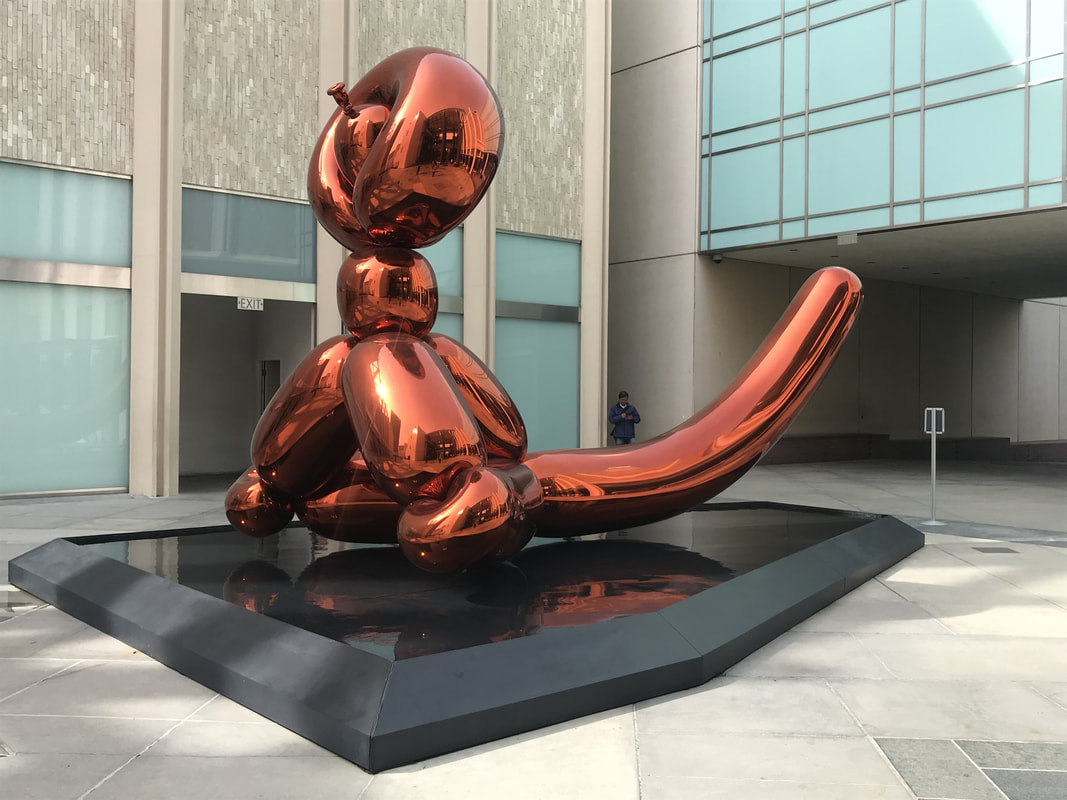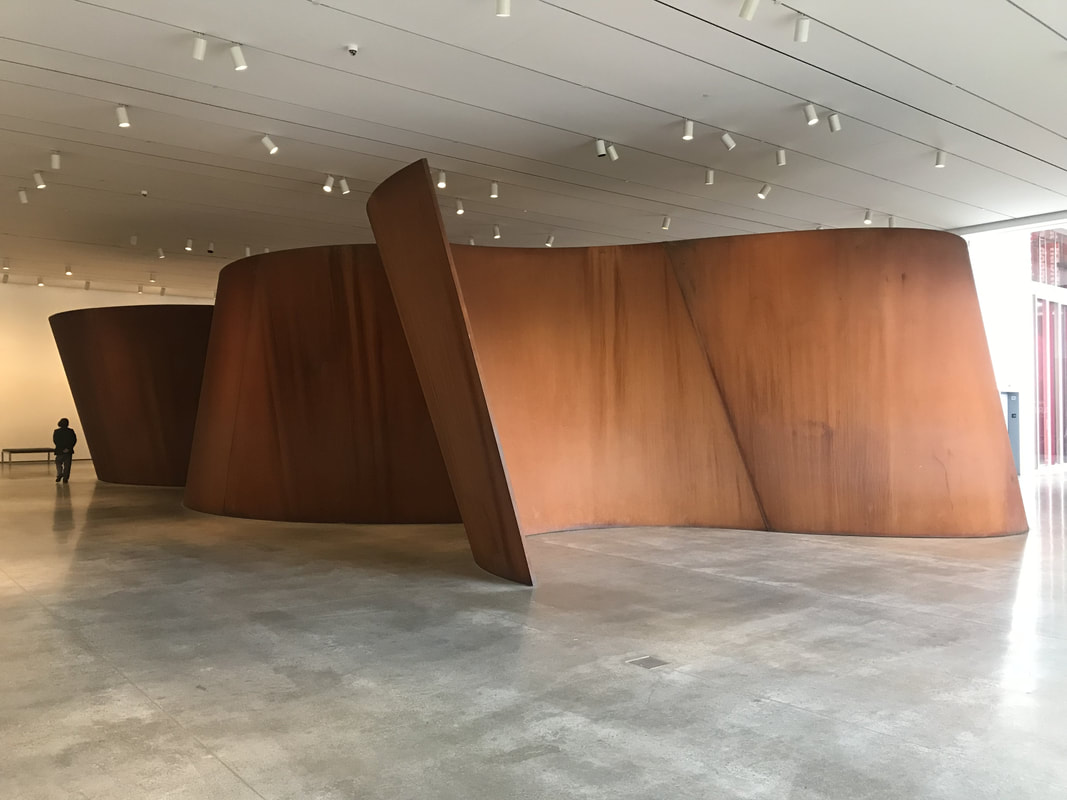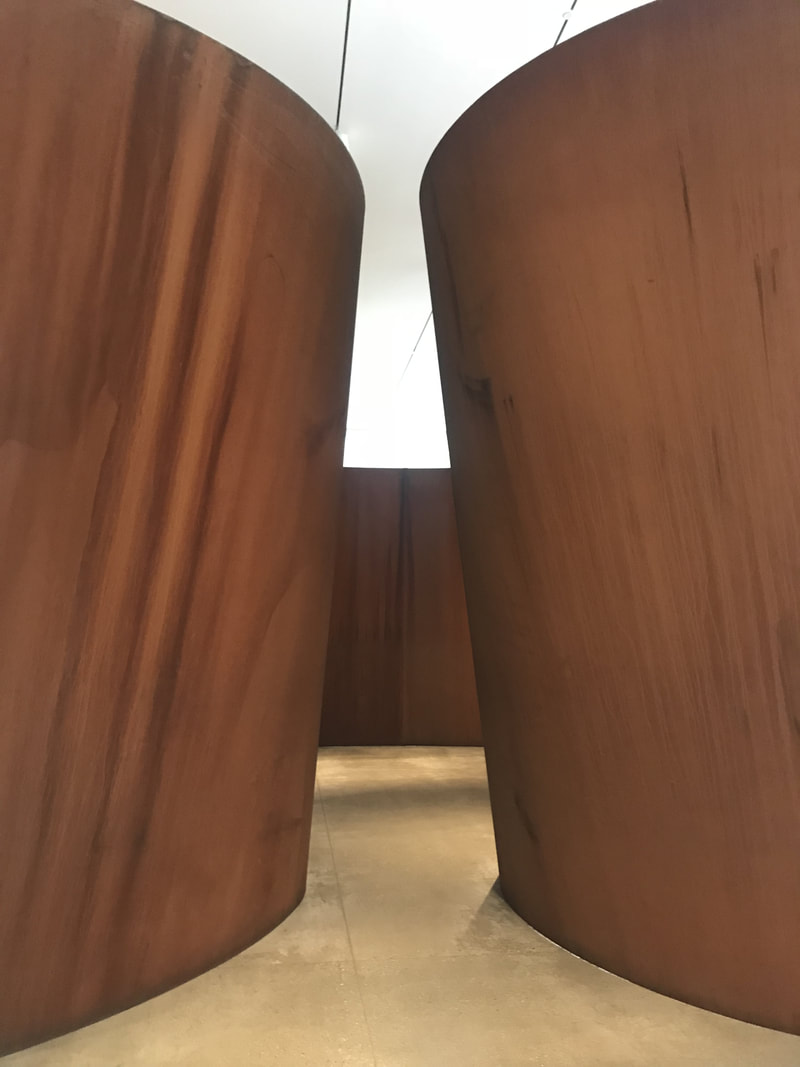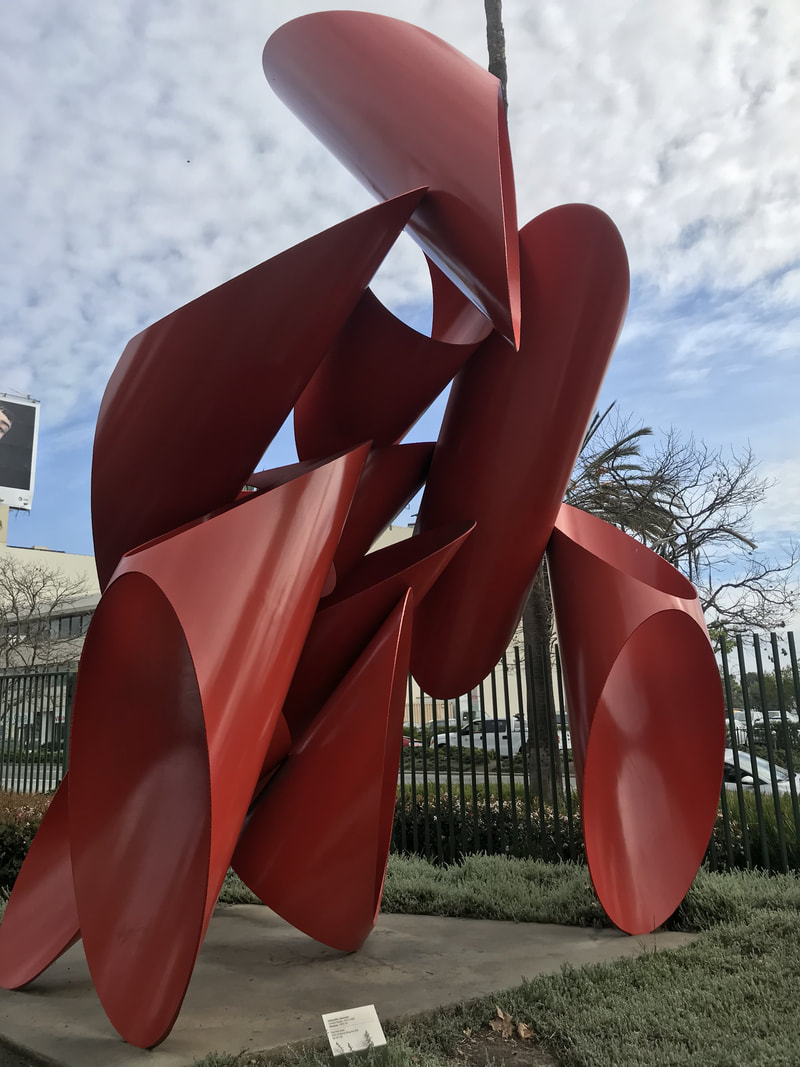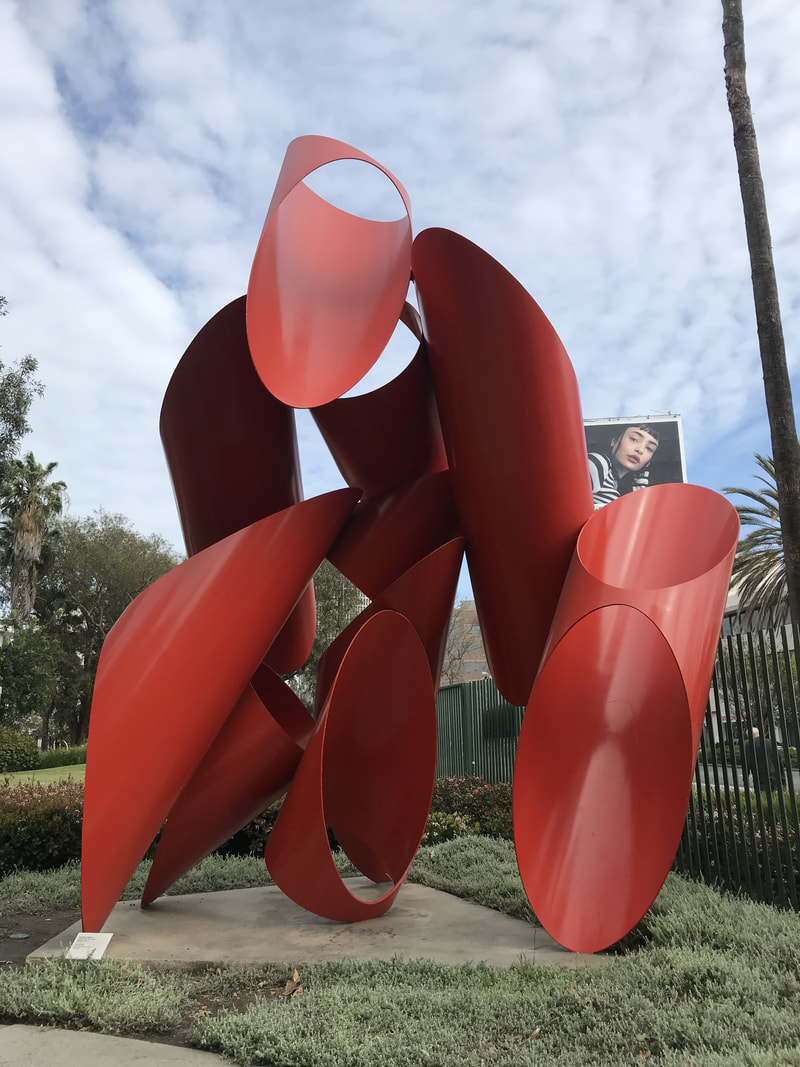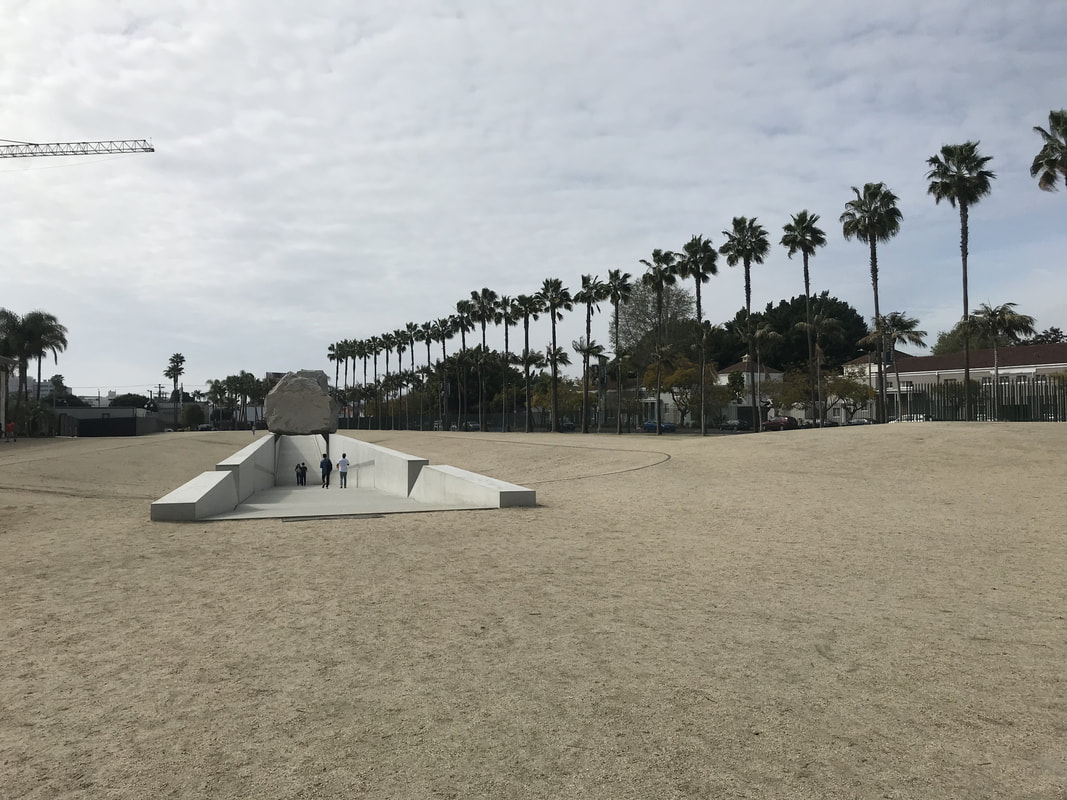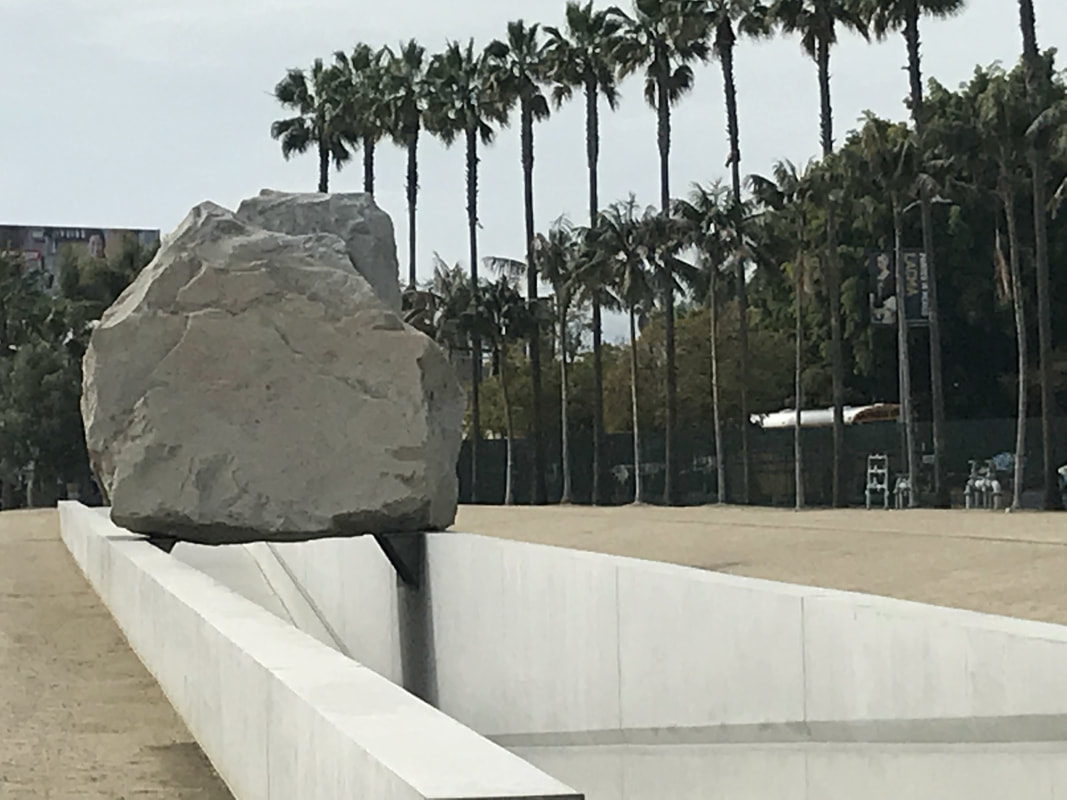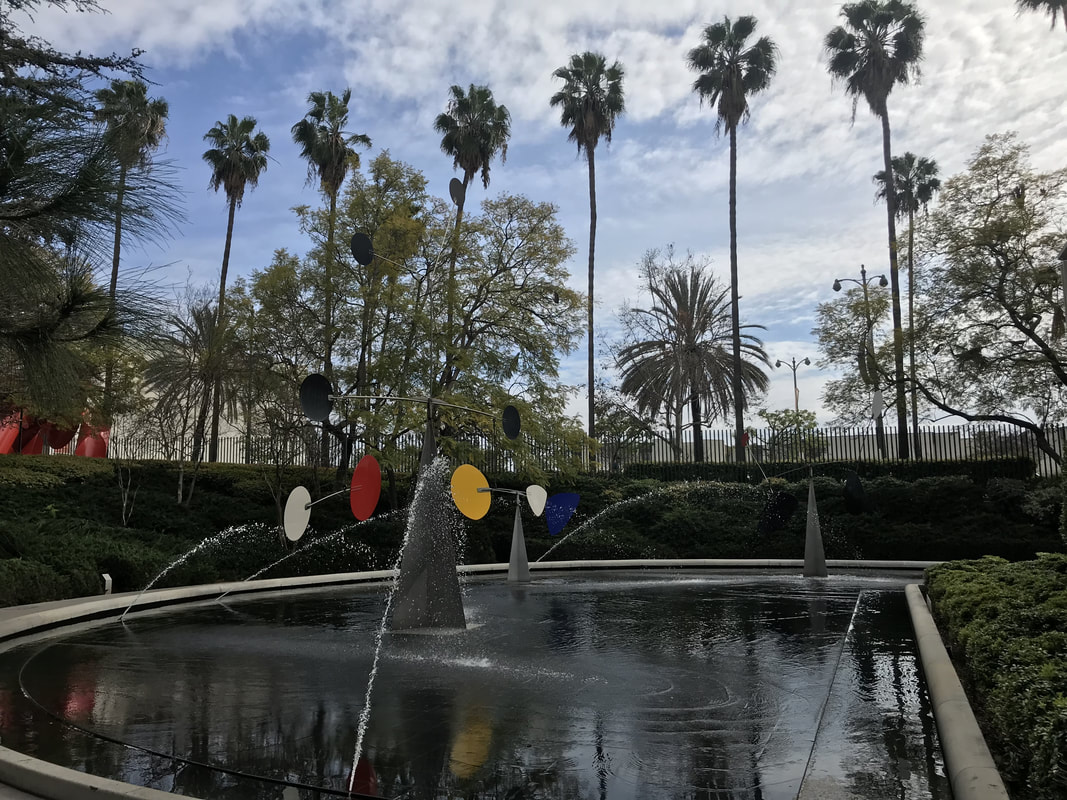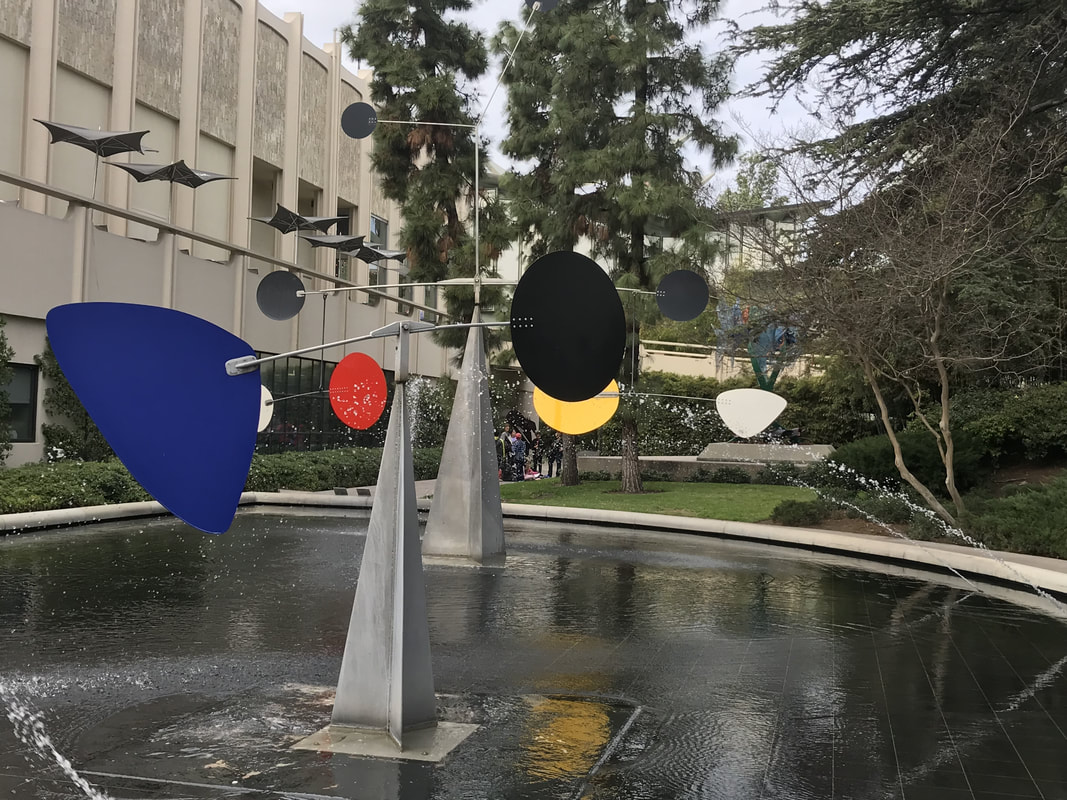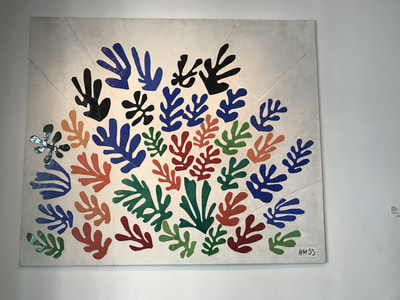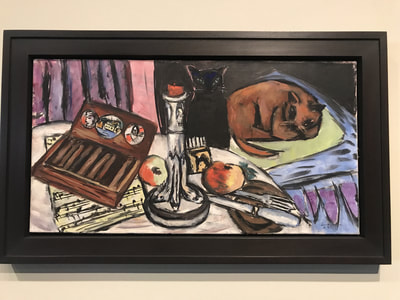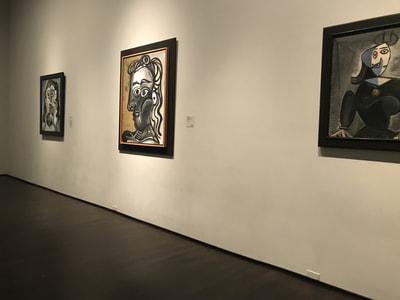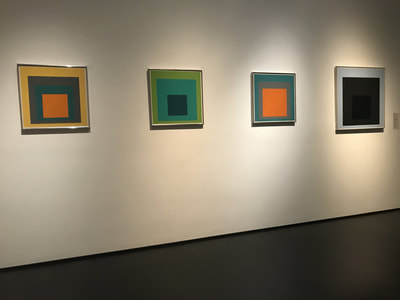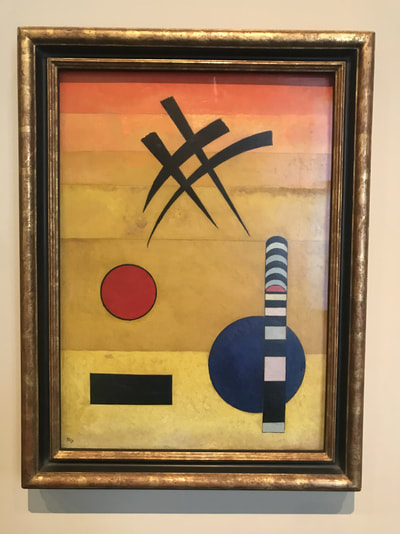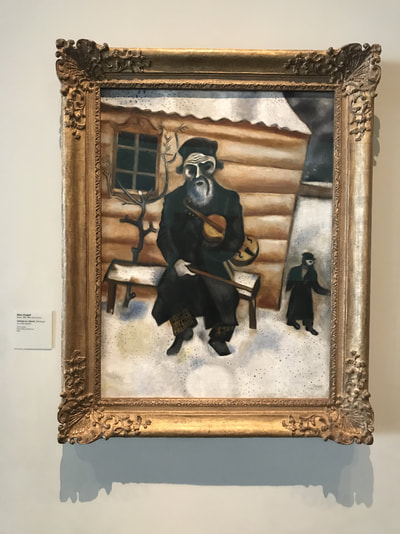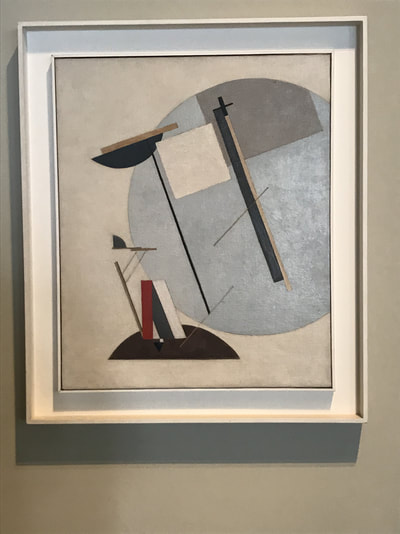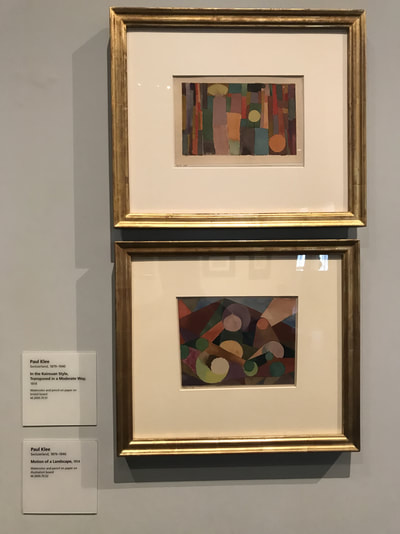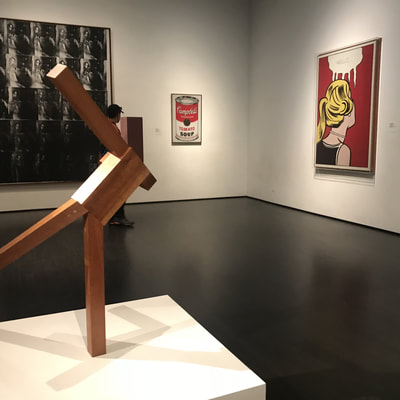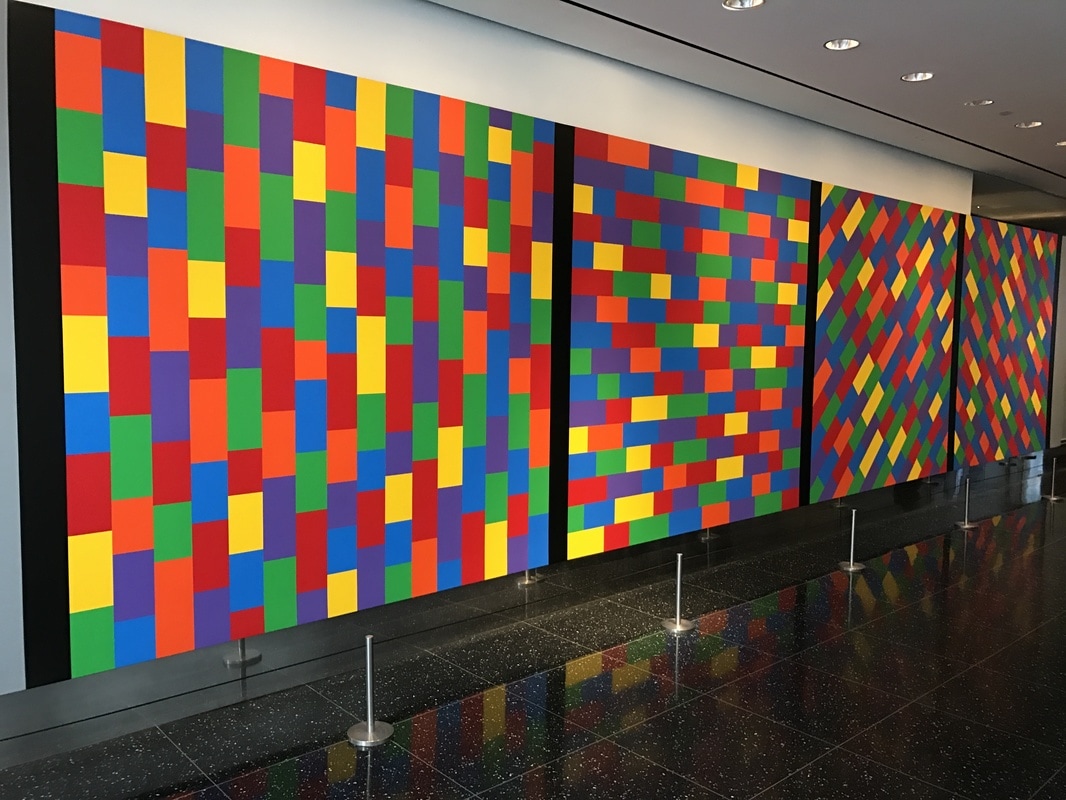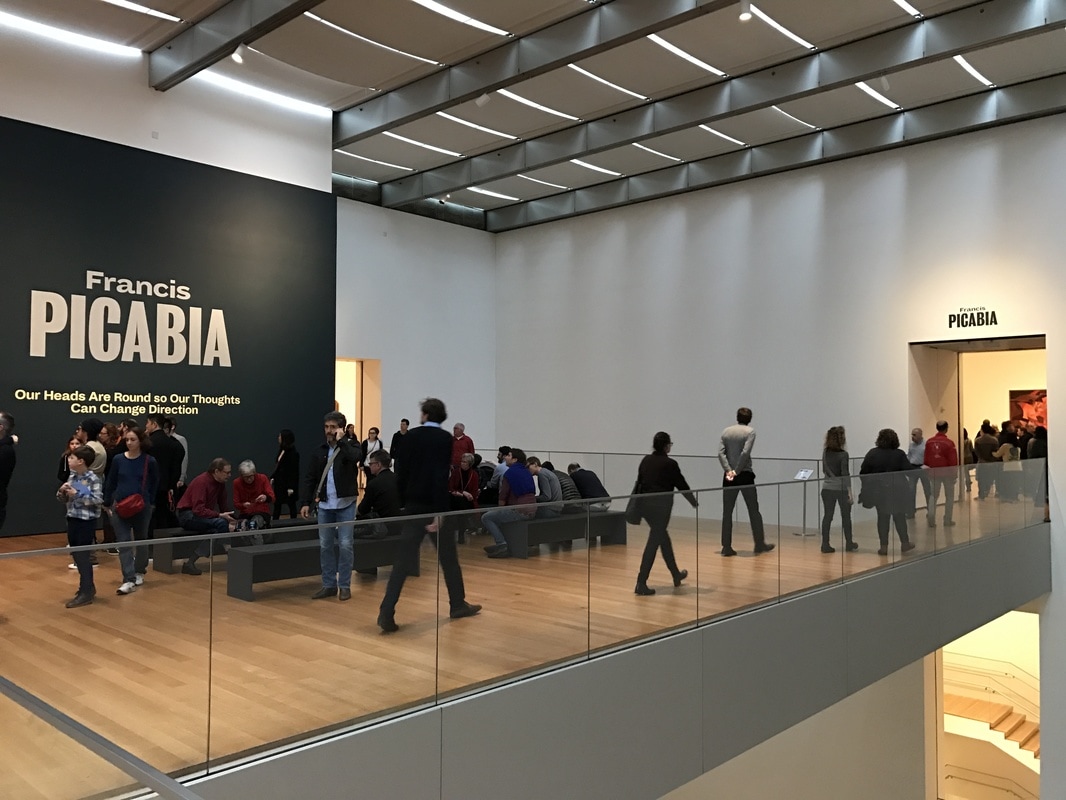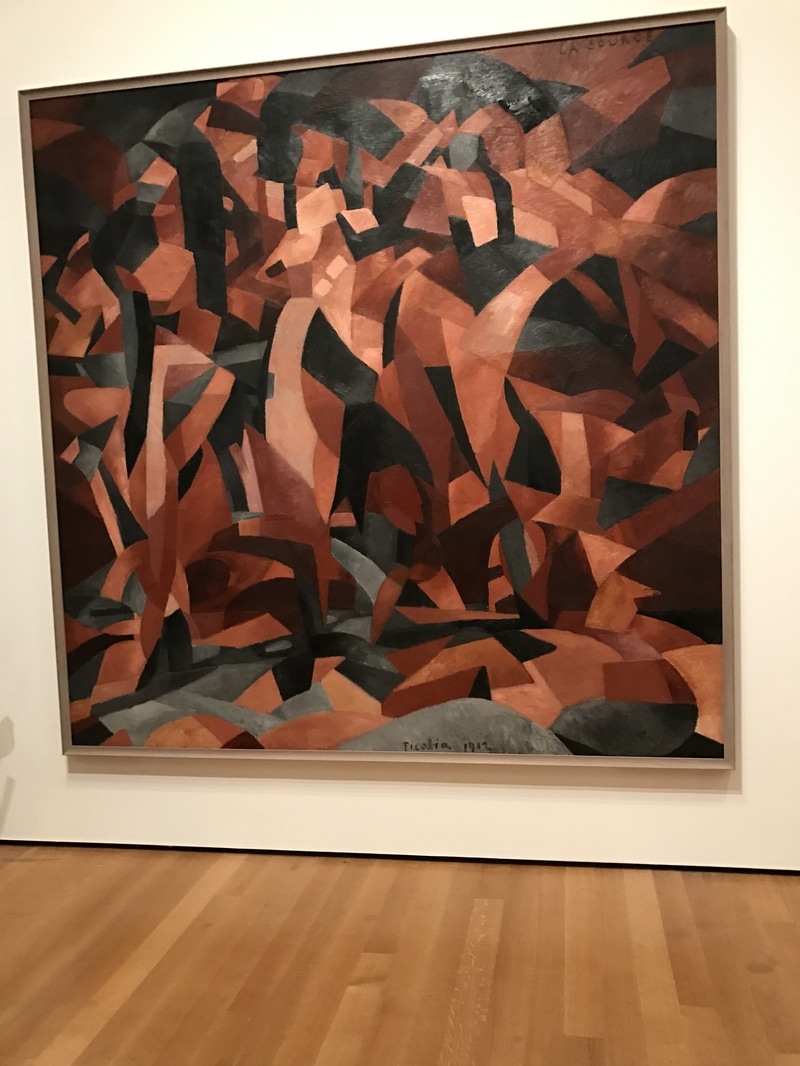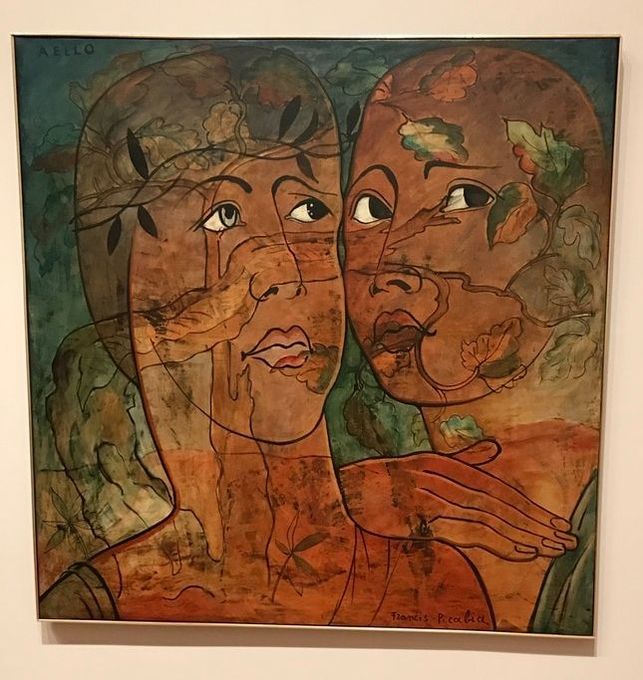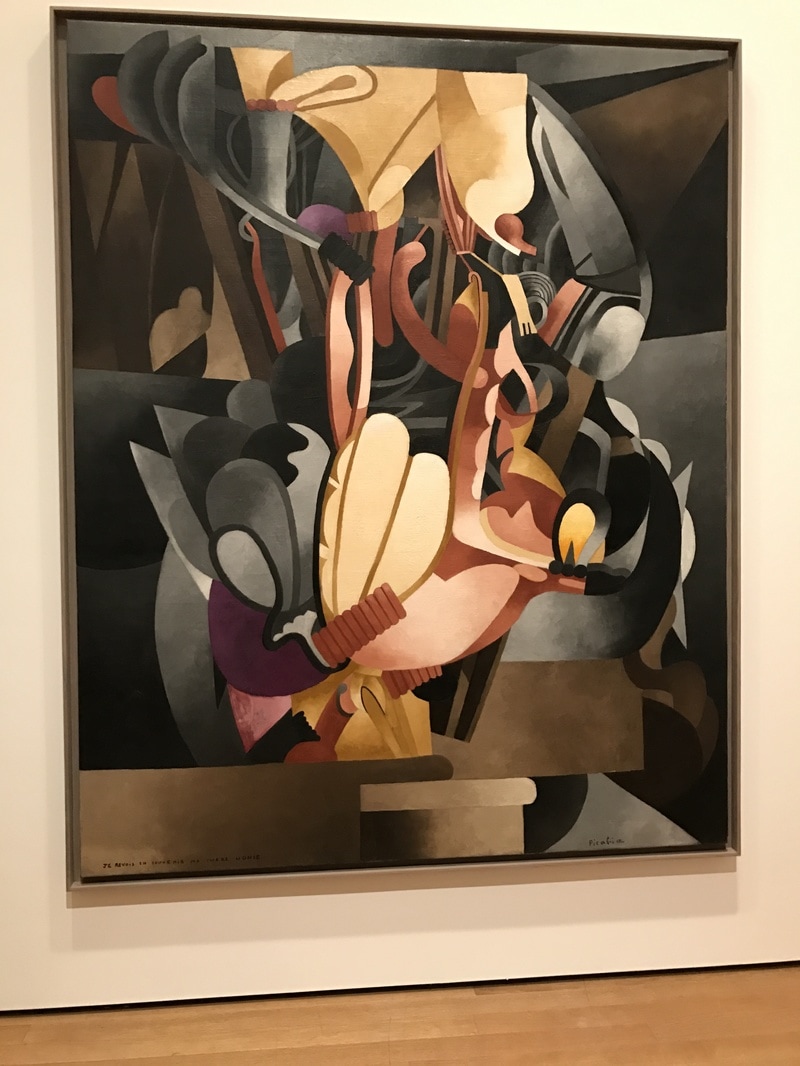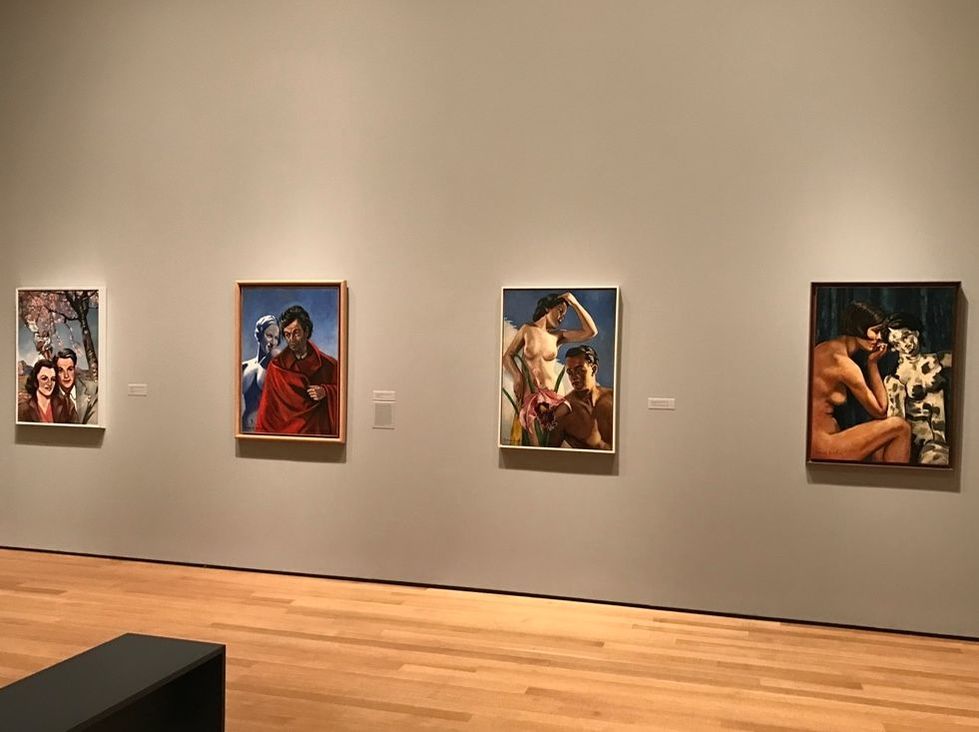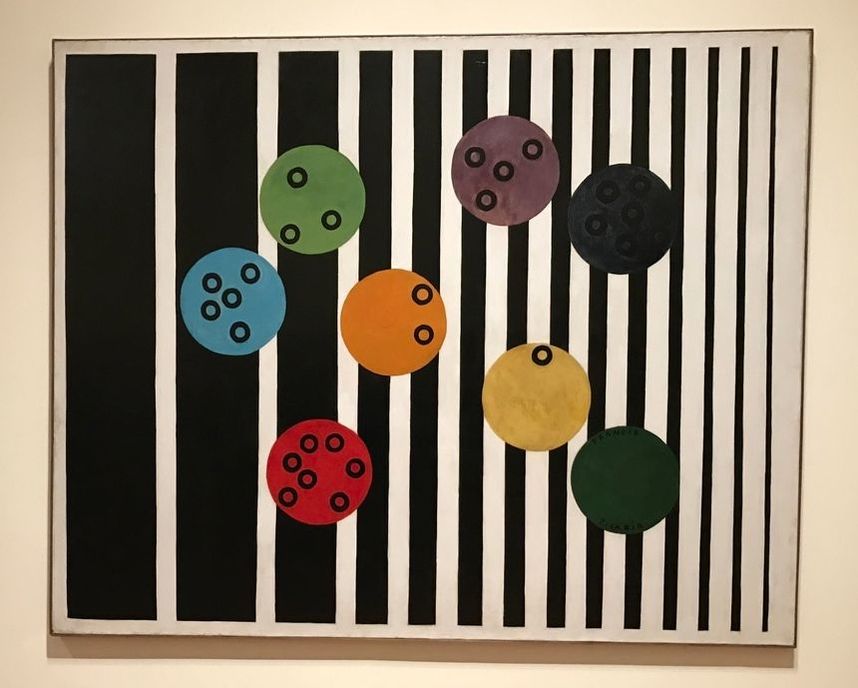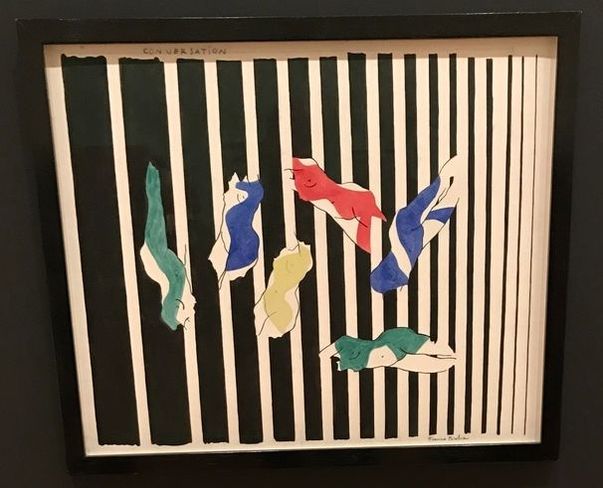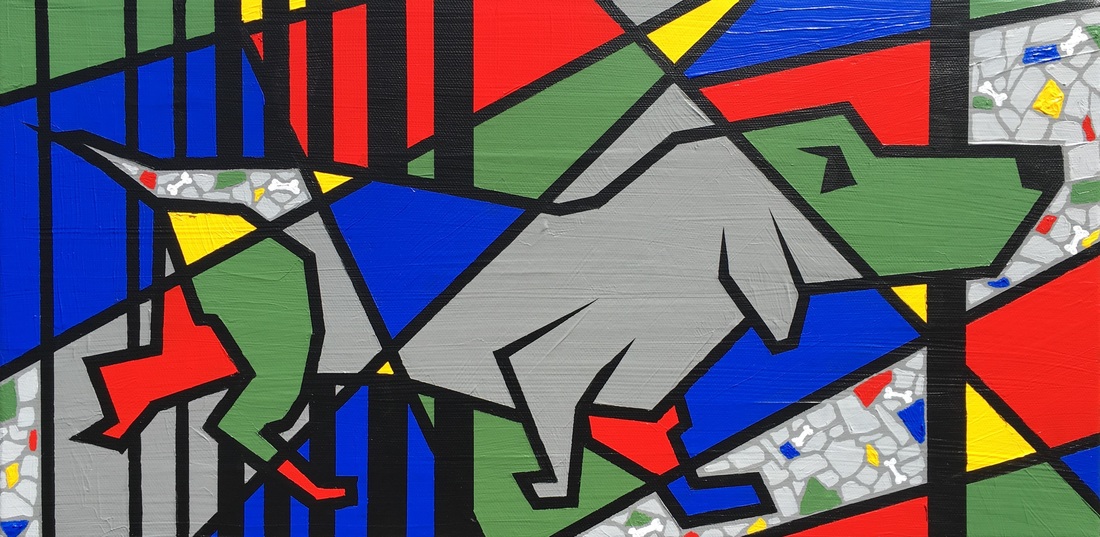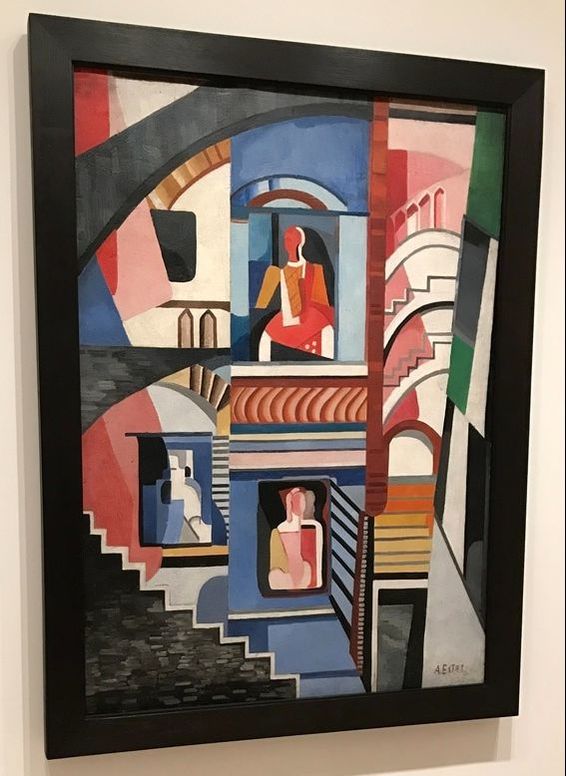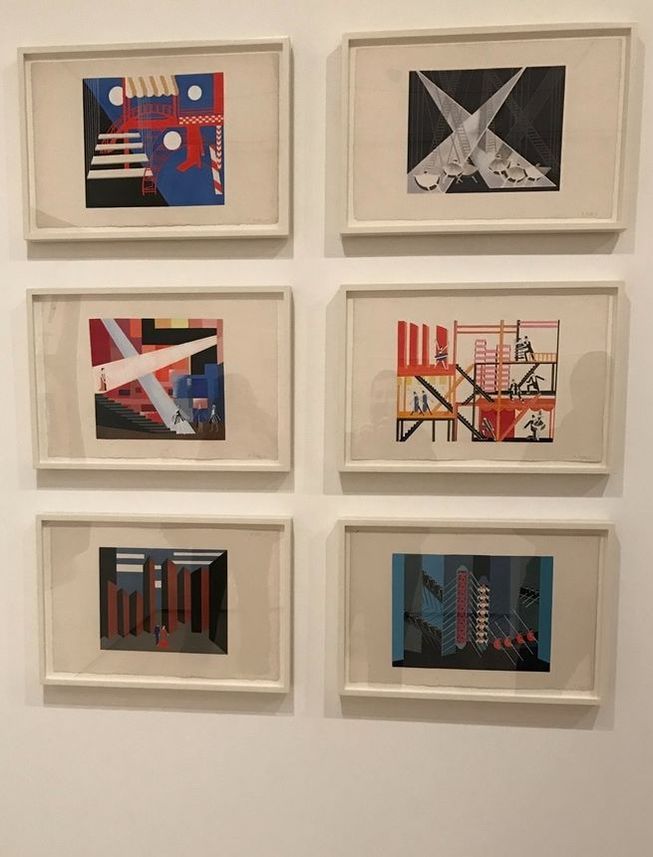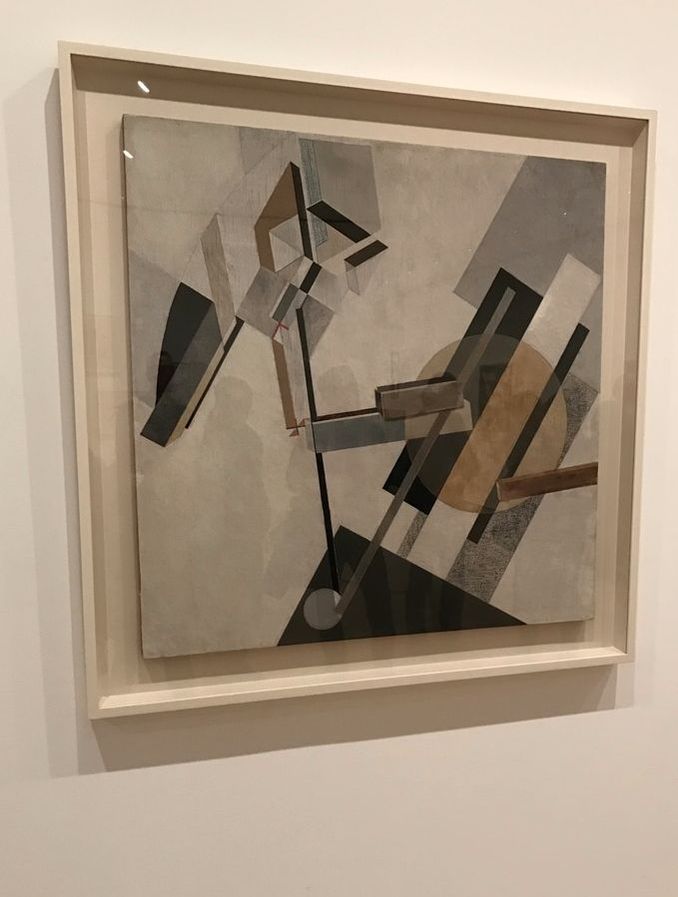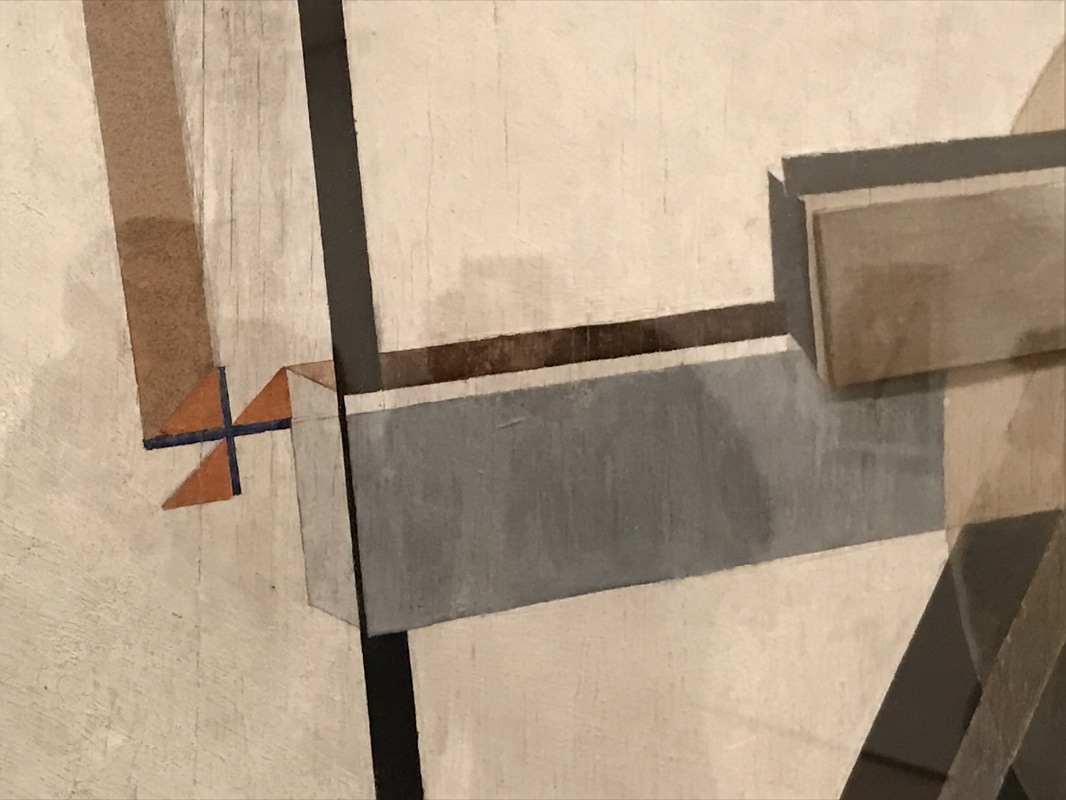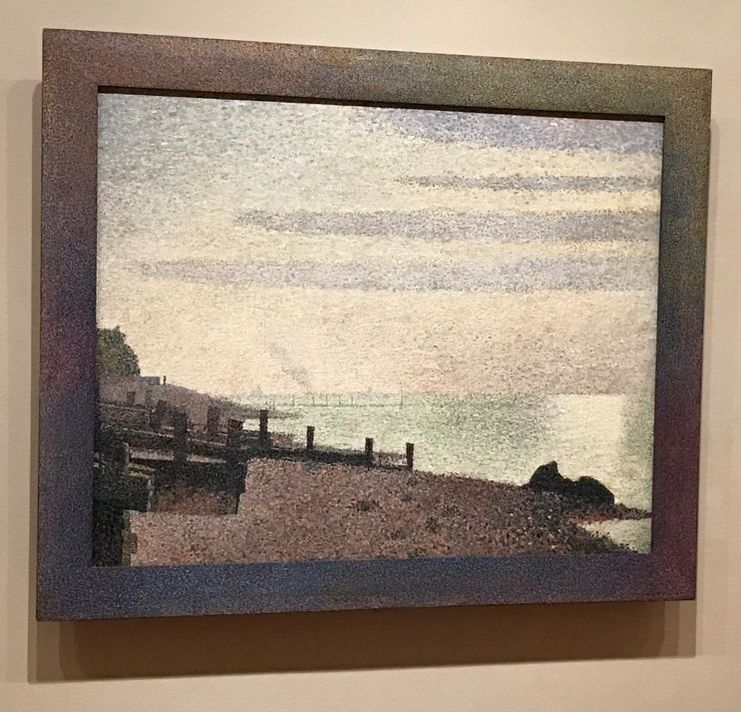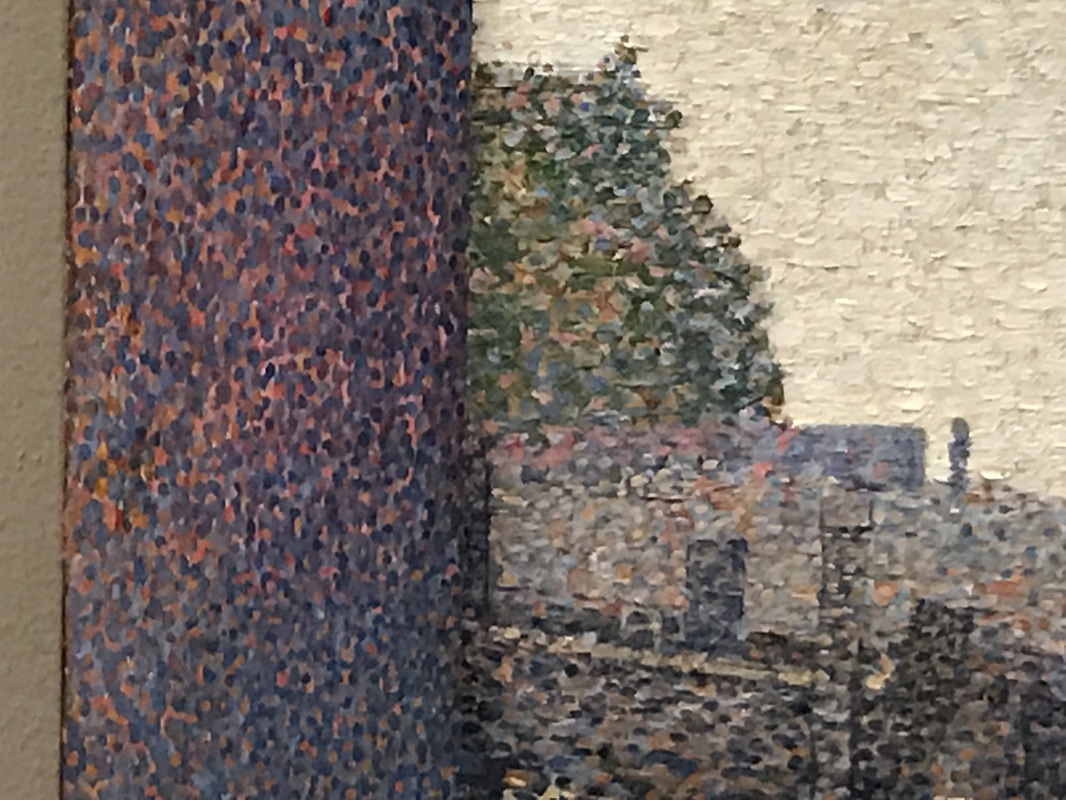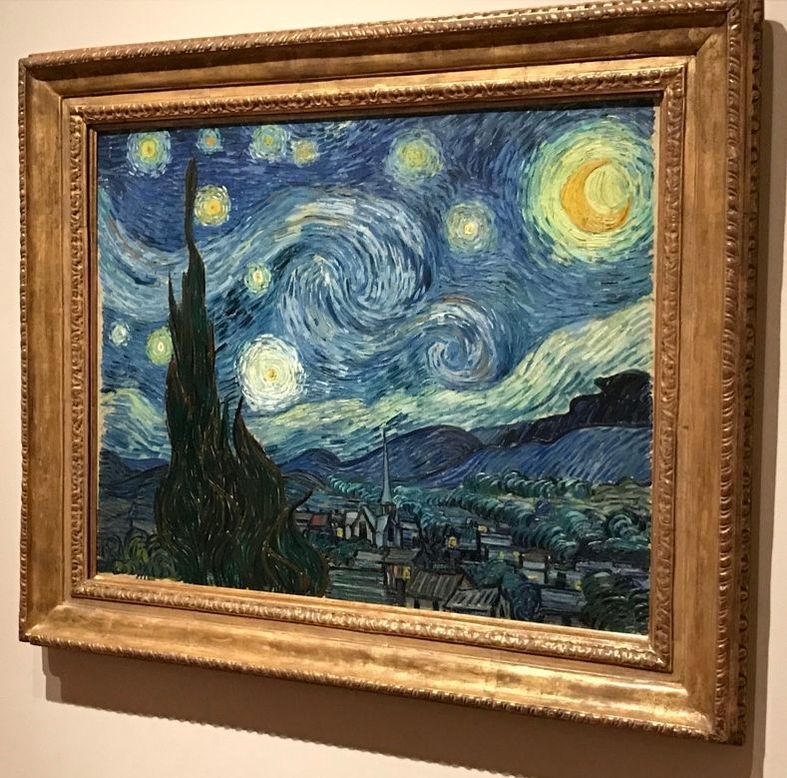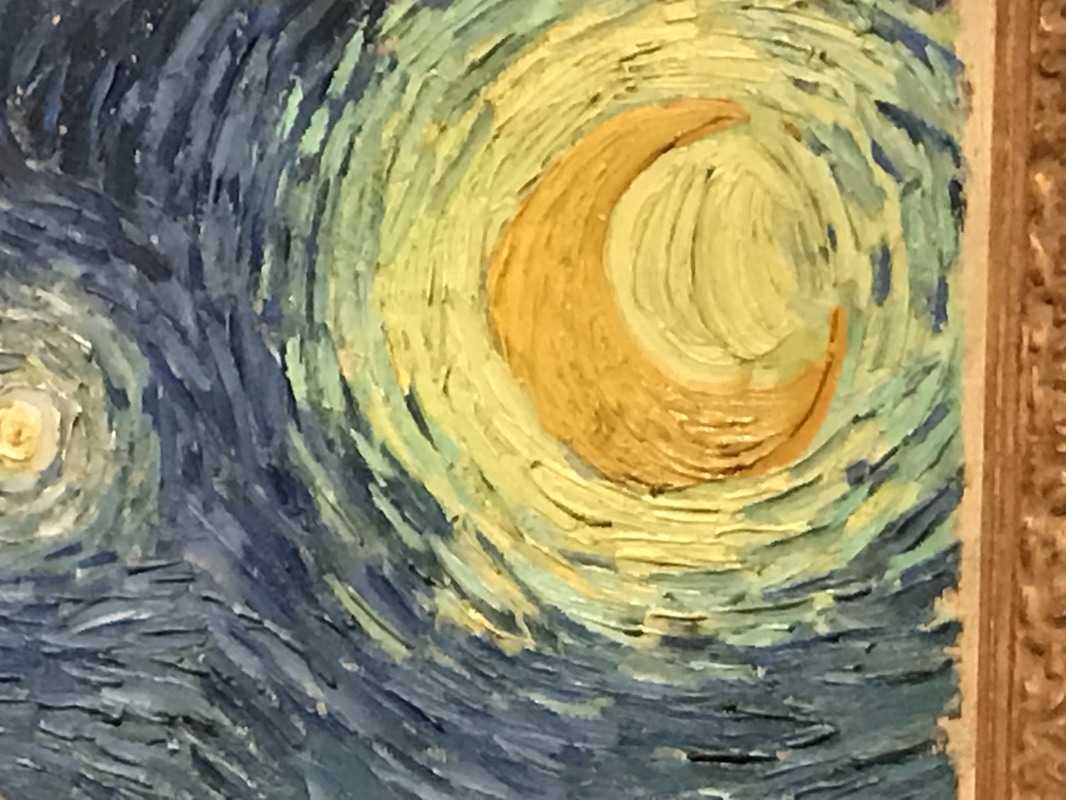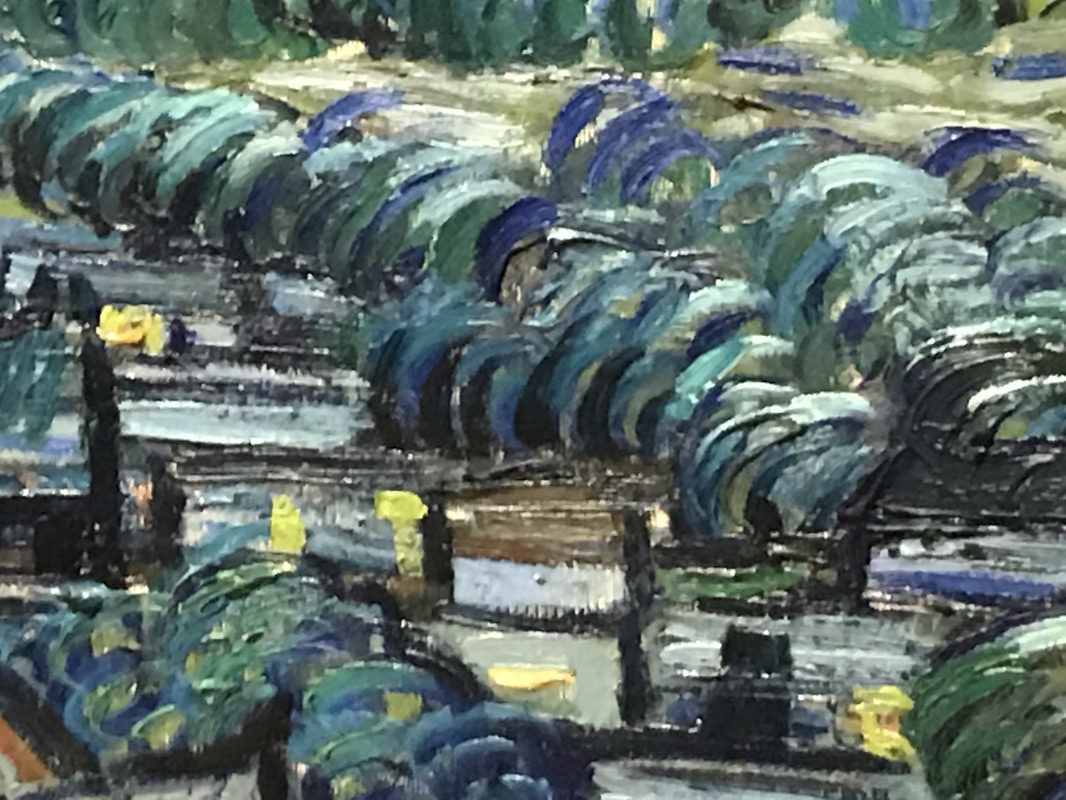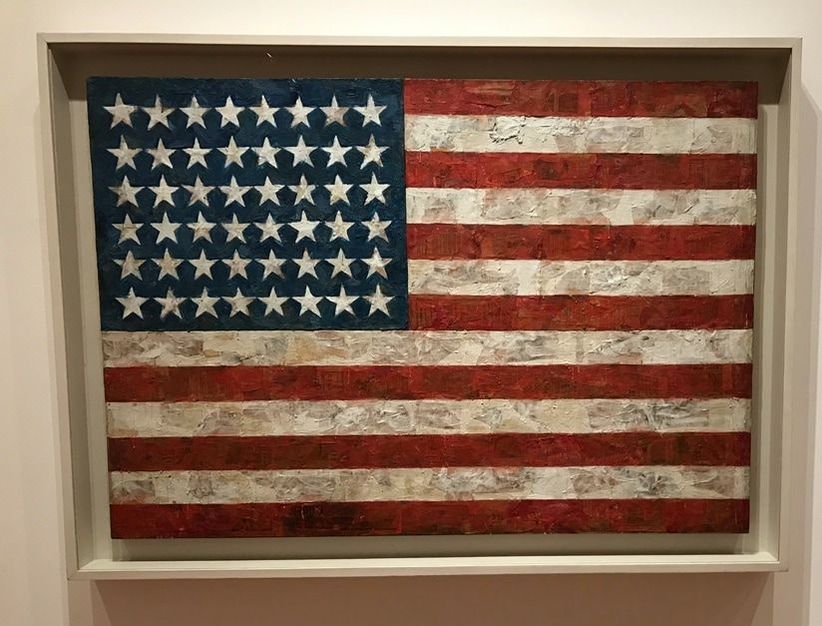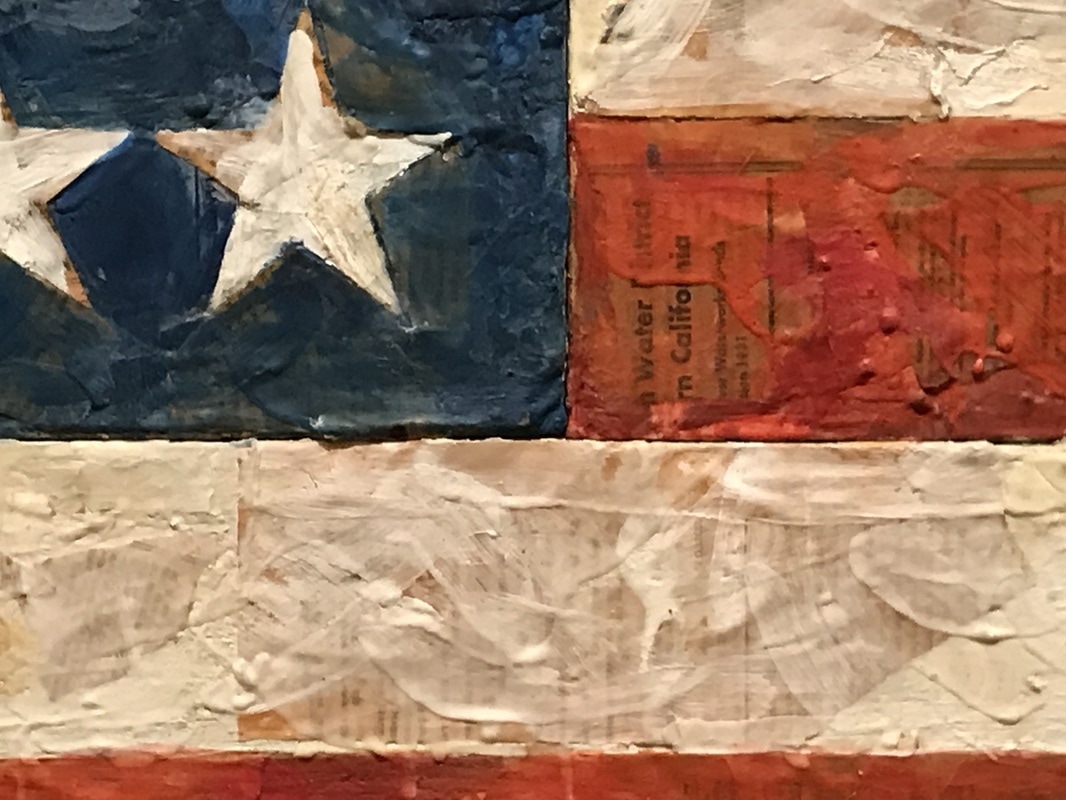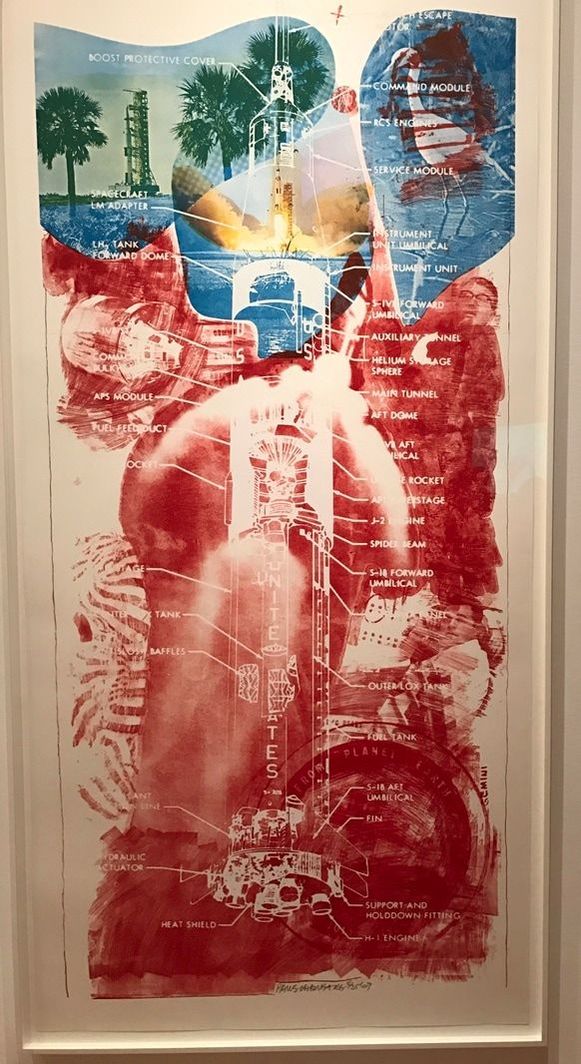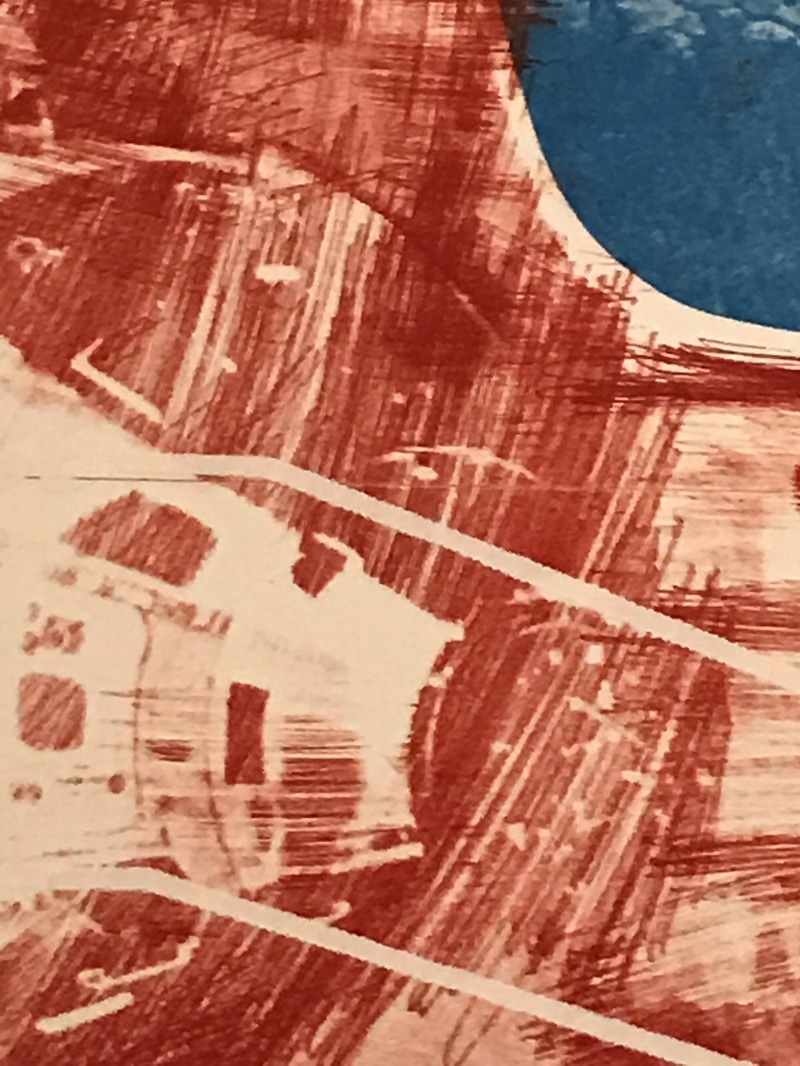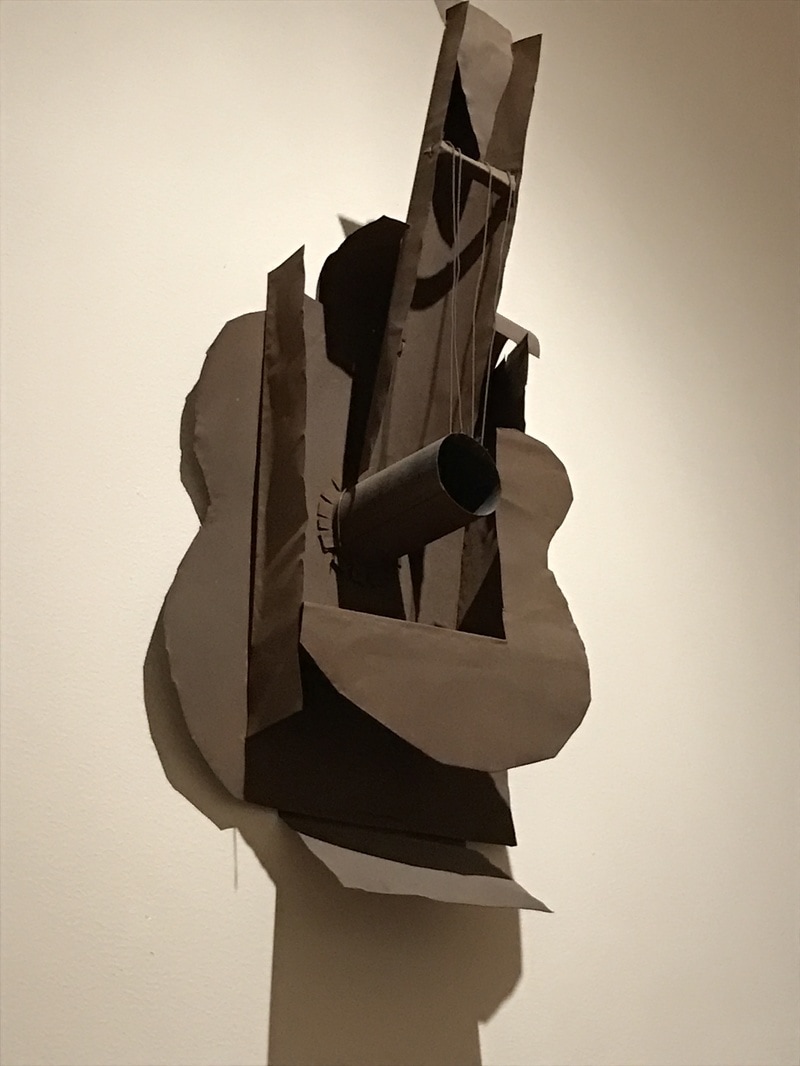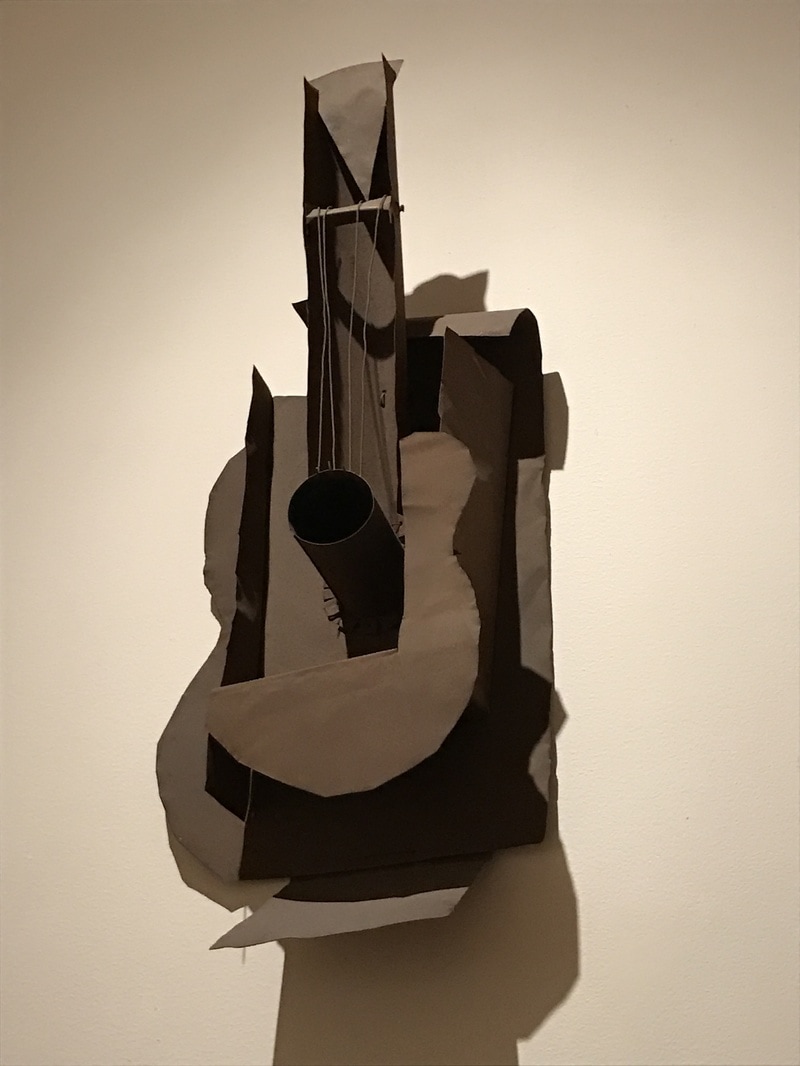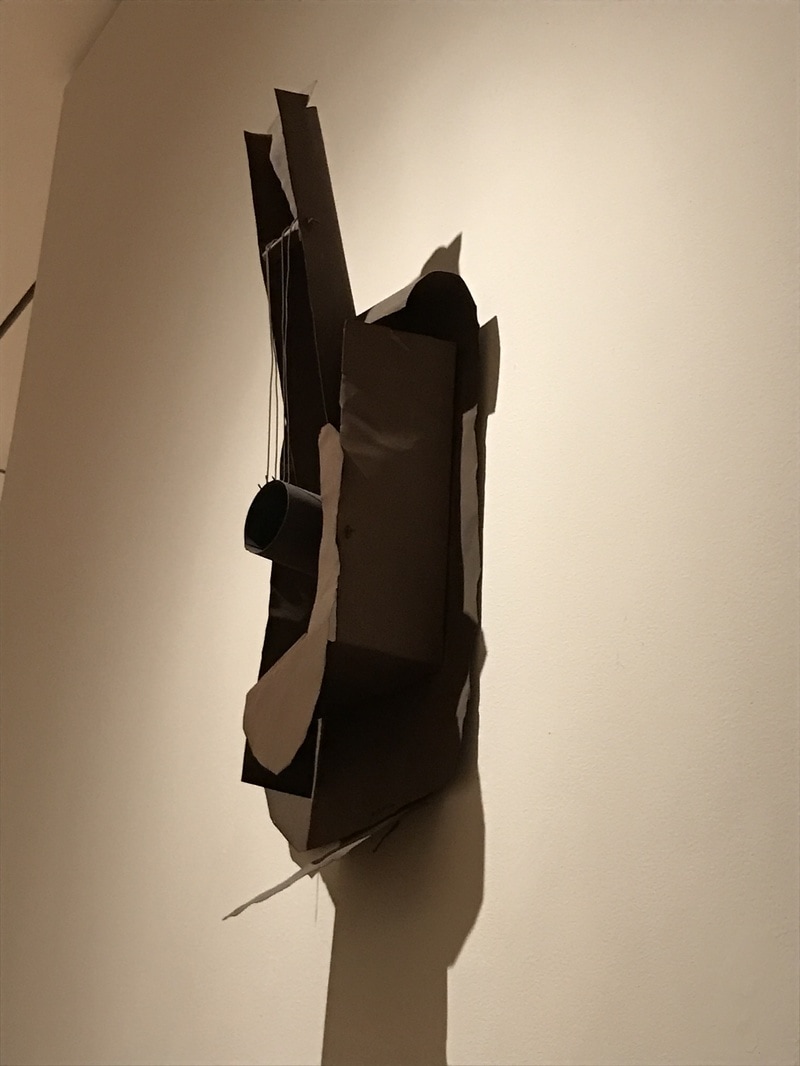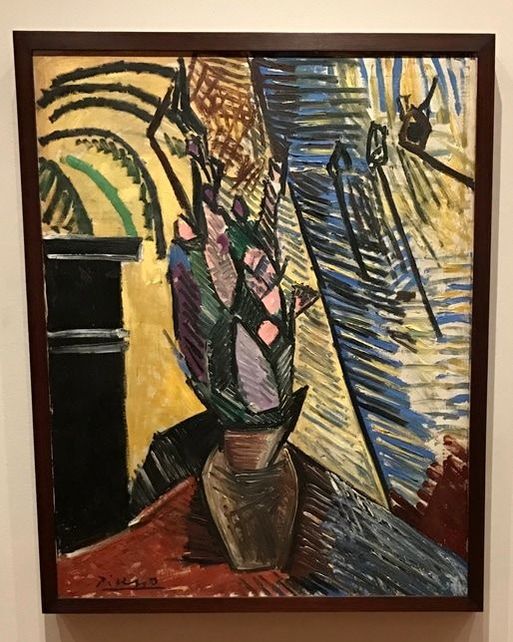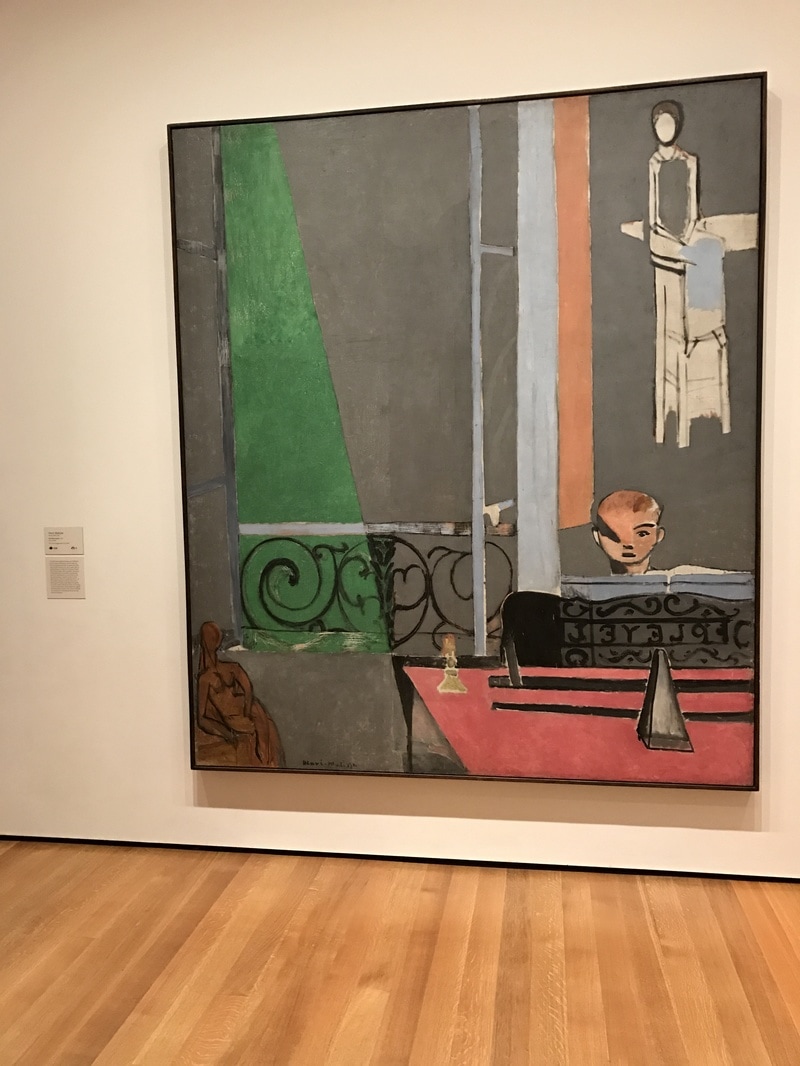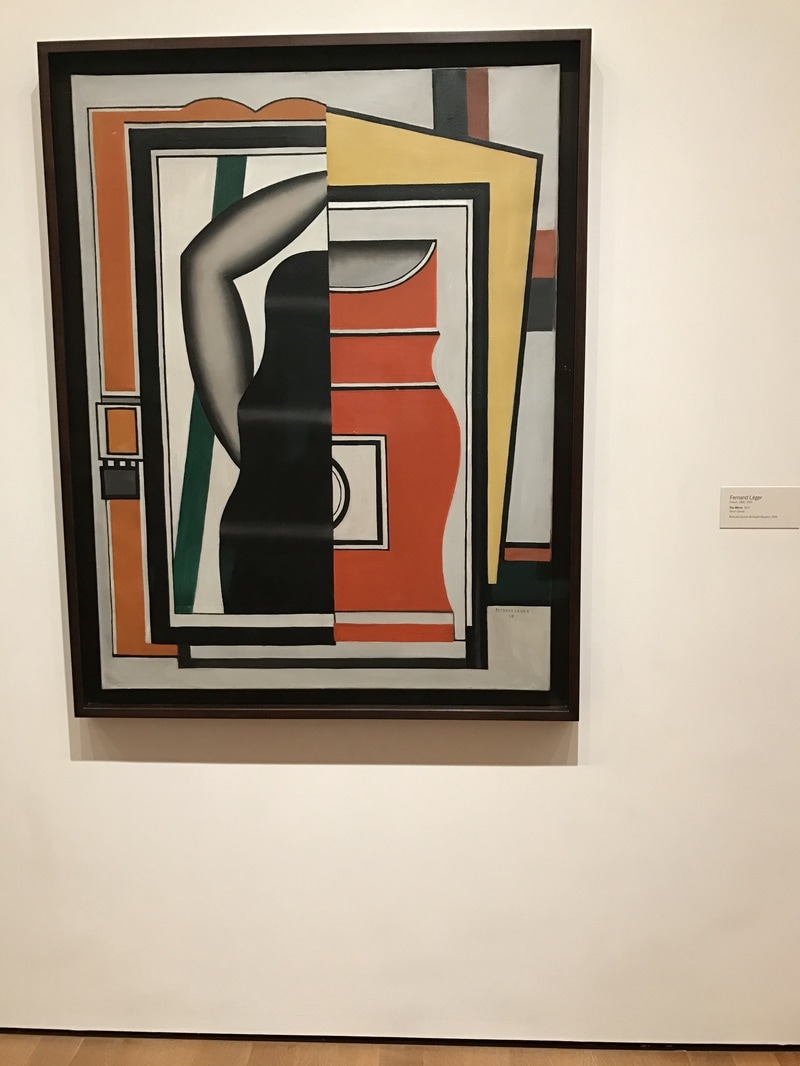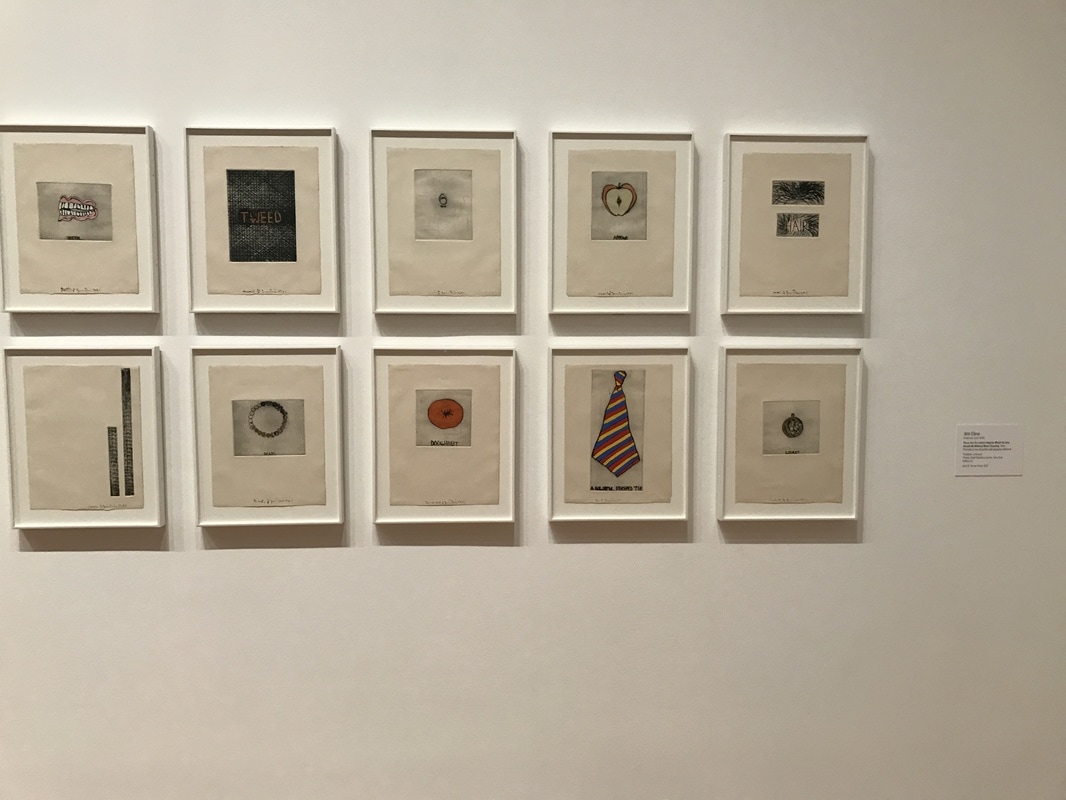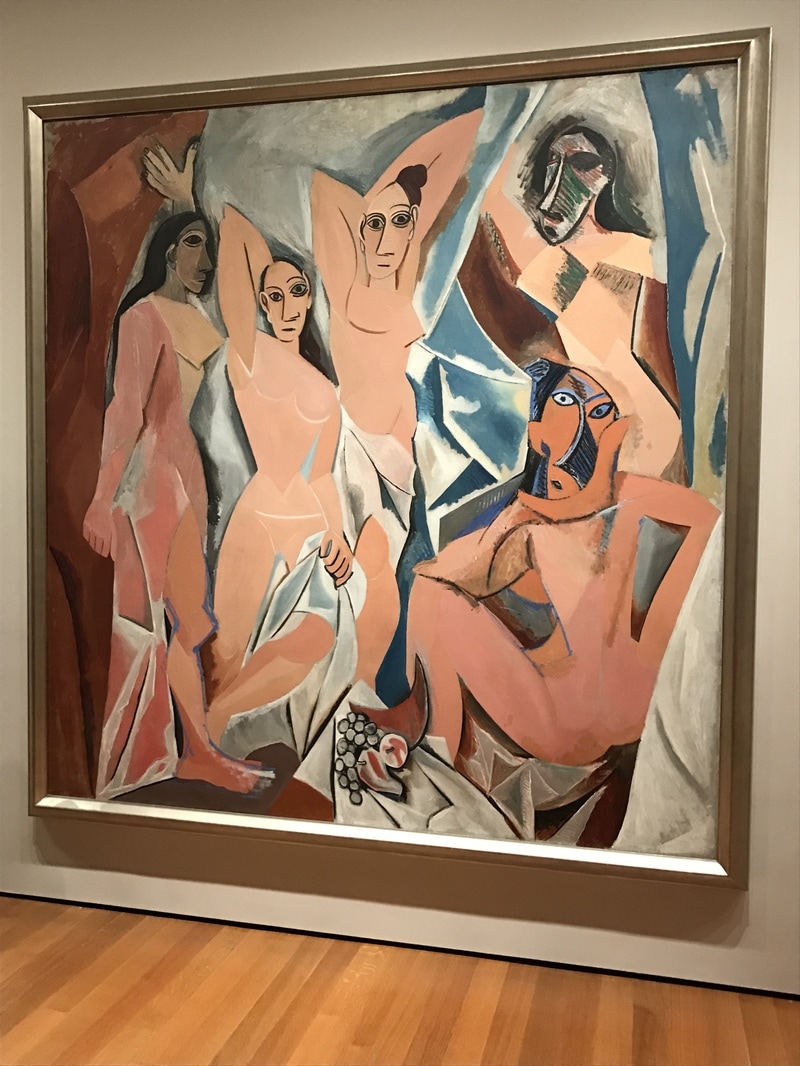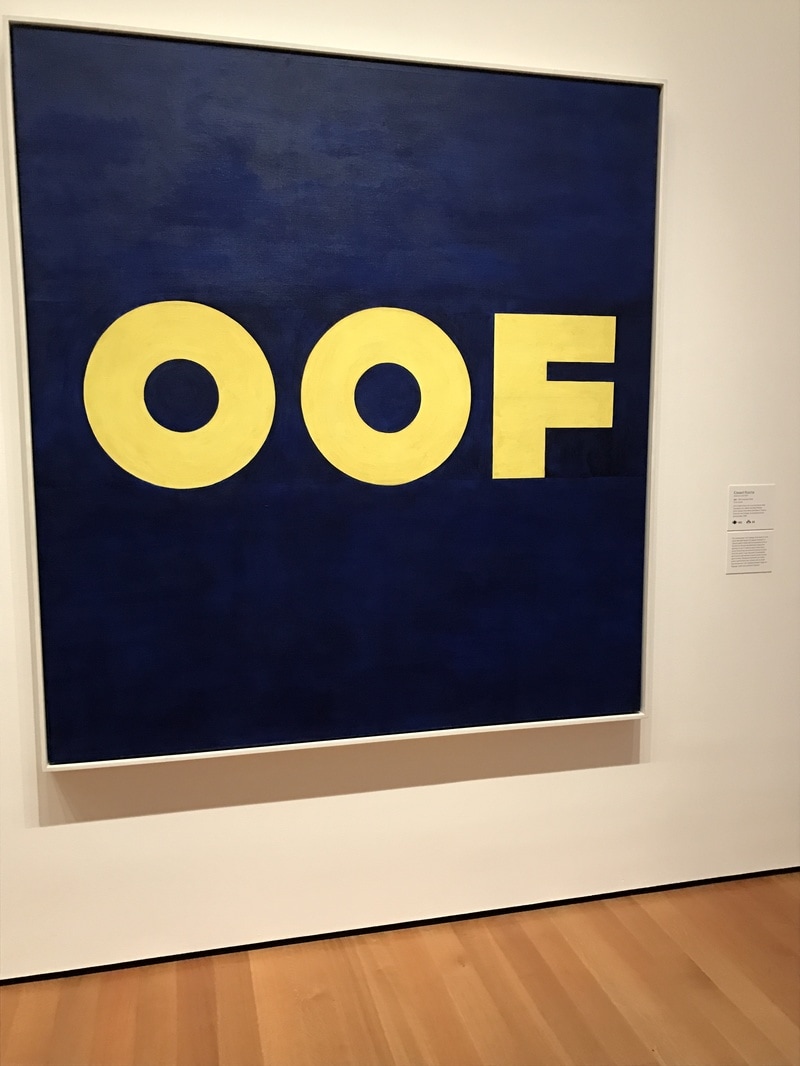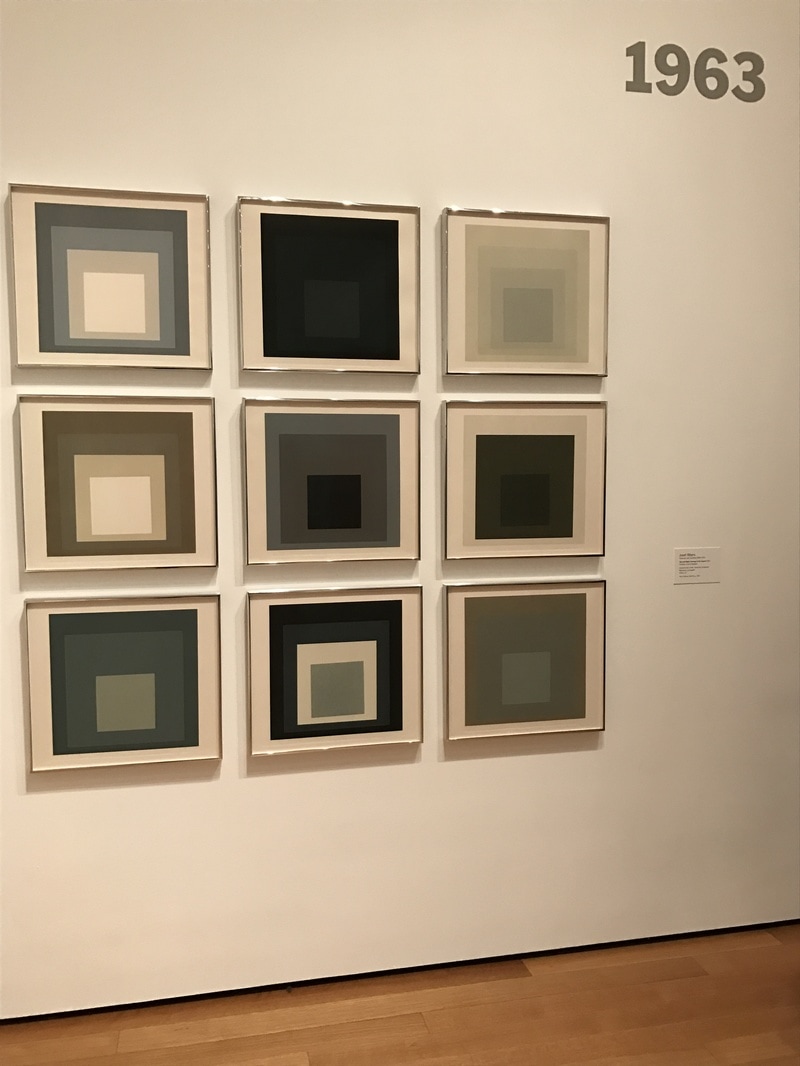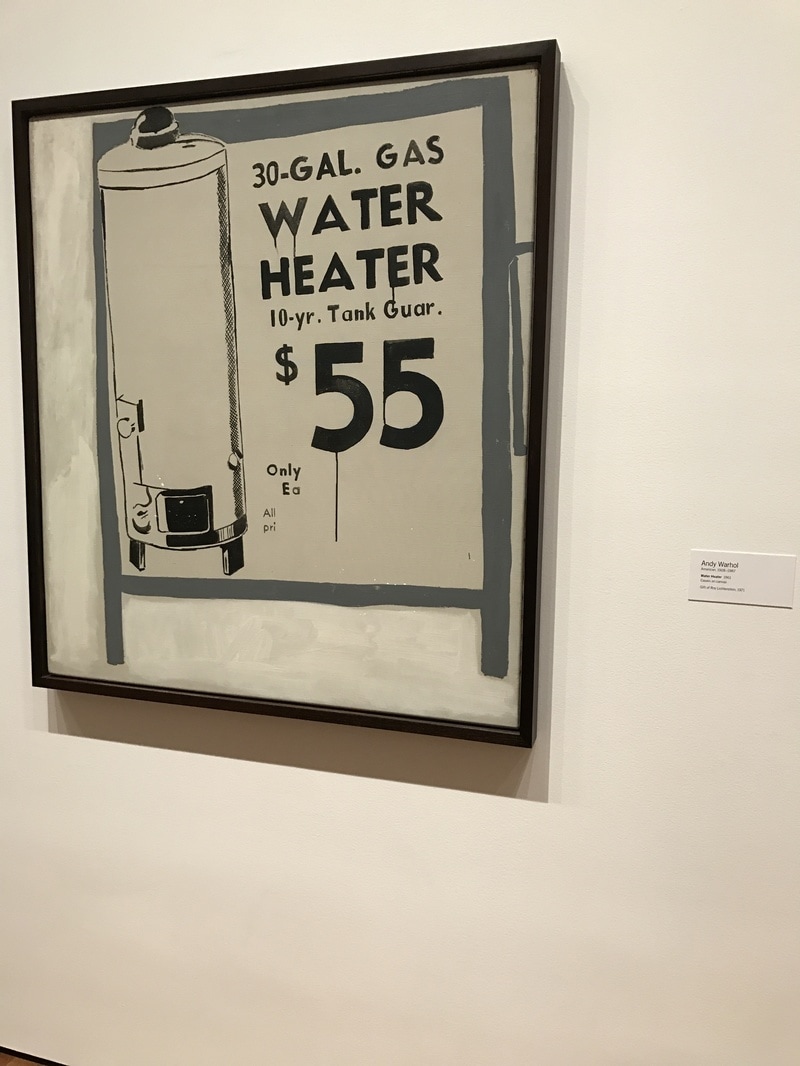Here's a photo of me at the Los Angeles County Museum of Art in front of Chris Burden's sculpture, "Urban Light" installed in 2008. Burden restored over 200 cast-iron streetlamps to create this work of art. Burden was fascinated with urban life and how streetlamps are one of the fundamental building blocks of an urban metropolis. I found it interesting that the streetlamps were recently converted to LEDs, reducing the installations's annual energy consumption by 90%. The conversion to LEDs was funded by the Leonardo DiCaprio Foundation this year. Chris Burden was commissioned by Brandeis University's Rose Art Museum to create a similarly themed sculpture. You can see it by CLICKING HERE in an older blog article about the Rose Art Museum. Chis Burden's "Metropolis II" depicts an urban landscape. Burden created "Metropolis I" seven years before "Metropolis II". The earlier work featured eighty Hot Wheels cars zooming around a model city. This work is much larger and includes 1,100 custom designed cars, 18 highways, and a vast array of buildings and structures. The artwork runs on select days and times, so plan ahead! Richard Serra's "Band" is a massive sculpture that fills a huge exhibition hall from top to bottom, from front to back. The sculpture took two and a half years to develop. Made from over 200 tons of steel, it measures 12 feet high and over 70 feet in length. Below are two views of the same sculpture, titled "Phoenix" by Alexander Liberman, created in 1974-75. I love how a different view of this sculpture creates an entirely new image, a new feeling, a new perspective. "Levitated Mass" (Shown below) was conceived by artist, Michael Heizer, in 1969, but only realized in 2012. "Levitated Mass" is a 456-foot-long concrete pathway, over which sits a 340-ton granite boulder. As you walk down the pathway, it descends to fifteen feet in depth, directly underneath the massive boulder before ascending back up. Below are two views of the same Alexander Calder sculpture created in 1964 titled, "Three Quintains (Hello Girls)." It is made from sheet metal and paint with motor. To me, it appeared to be moved by the wind, but apparently it has a motor that moves the mobile sculpture.
0 Comments
Just recently, on February 14th, I came across an editorial article on Artsy.net by Isaac Kaplan entitled, "Do Francis Picabia's Anti-Semitic Remarks Tarnish his MoMA Retrospective?" After reading the article I learned about Picabia's anti-Jewish feelings (and womanizing behaviors). MoMA's exhibit apparently does address this part of Picabia's character; however, I must have missed this as I walked through the gallery. To answer Kaplan's question personally. I think it does, in fact, tarnish his reputation. I really enjoyed his artwork during my visit to the MoMA. But after learning more about the artist, I can't say that I can admire him. Famous artists are people that I want to look up to and admire. They are people that I want the next generation of artists to look up to. And so, while I can appreciate his artwork at face value and his artistic technique, learning about his anti-Semitic behavior does take him down several notches in my book. Similarly, just like we want our kids to admire our professional sports players, it's hard to have our kids look up to them if they do drugs, treat women badly, are anti-gay, or are anti-Jewish, or discriminate in any way. So, I'm kind of let down after my great experience viewing his work in the gallery. But for this blog article, I will continue to proceed sharing my thoughts on the exhibit as if I hadn't learned of his anti-Semitic feelings and behavior. Here is the link to the article for your information: https://www.artsy.net/article/artsy-editorial-francis-picabias-anti-semitic-remarks-tarnish-moma-retrospective As I walked though the gallery rooms, the one thing that struck me the most was how his artistic style changed throughout his lifetime. Picabia was an artist of many genres, and his body of work lacks consistency and categorization. He shifted styles over time. The exhibit highlights his impressionist landscapes, abstract works, paintings, photo-based nudes, etc. Here are some photos from the exhibit. These two Picabia paintings shown below reminded me of one of my own paintings that I painted earlier this past year, "Woof Woof! Gotta Get My Bone." All three works utilize black lines in a similar fashion. I should note that my painting was created without ever seeing Picabia's work; I am just noting the coincidence in how we both used these lines in the same fashion. "Revolutionary Impulse: the Rise of the Russian Avant-Garde" was another wonderful temporary exhibit at the Museum of Modern Art that runs through March 12, 2017. The fact that all the artwork on display comes directly from MOMA's permanent collection, demonstrates how wonderful MOMA is and how impressive their permanent collection is. Of all the artwork on view, there were two artists whose work caught my eye. The two photos below are from the Russian artist Alexandra Exter. The oil on canvas painting on the left, called "Theatrical Composition" was very intriguing to me. I loved the colors, shapes, and overall composition of the painting. The other smaller works, pictured to the right are six designs from various stage sets like The Merchant of Venice, Othello, and others.
To photograph all the well-know paintings from all the famous artists would be a huge undertaking. So I'm including a small selection of some of my favorite pieces along with some detailed close-up photos from the following artists: Georges Seurat, Vincent van Gogh, Pablo Picasso, Jasper Johns, Henri Matisse, Fernand Leger, Jim Dine, Andy Warhol, Edward Ruscha, Josef Albers, James Rosenquist, Robert Rauschenberg, and Sol LeWitt. I have the close-up photos to show the brushstrokes, the detailed use of color, and a glimpse into what the artist was focused on while painting their masterpiece. Pablo Picasso's Guitar Sculpture (3 views), and below, "Vase of Flowers" & "Les Demoiselles d'Avignon I highly recommend visiting the Museum of Modern Art in New York City. More information about the museum can be found on their website: www.moma.org. PS: If you liked this article, you might like these other articles on my artistic travels:
Kennebunkport, Maine Los Angeles, California New York City Street Art Napa Valley, California Park City, Utah Barcelona, Spain Caribbean Art |
The Art ConnectionWelcome to Eddie Bruckner's Art Blog! Archives
April 2022
Categories
All
|
